Welcome to ITPro’s live coverage of Oracle CloudWorld 2024 for day two of the event.
We've got more keynotes ahead of us today - to kick us off we'll hear from EVP of Oracle Applications Development, Steve Miranda.
His keynote is entitled 'Discover the Power of Oracle AI in Oracle Fusion Applications,' so expect to hear about all Oracle can offer in its Oracle Fusion Applications department.
While we wait for everything to kick off, why not check out this piece for a steer on what to expect today:
Oracle can do for AI what it did for cloud – and CloudWorld 2024 is its chance to show that
The firm has taken a no-nonsense approach to AI over the last few months, and Oracle CloudWorld may well see an extension of that rhetoric. Ditching the generative AI hype has been key for the firm and is what makes Oracle stand out in the current goldrush.
The venue is impressive at this years event, with brand logos located all around the keynote halls and meeting rooms.
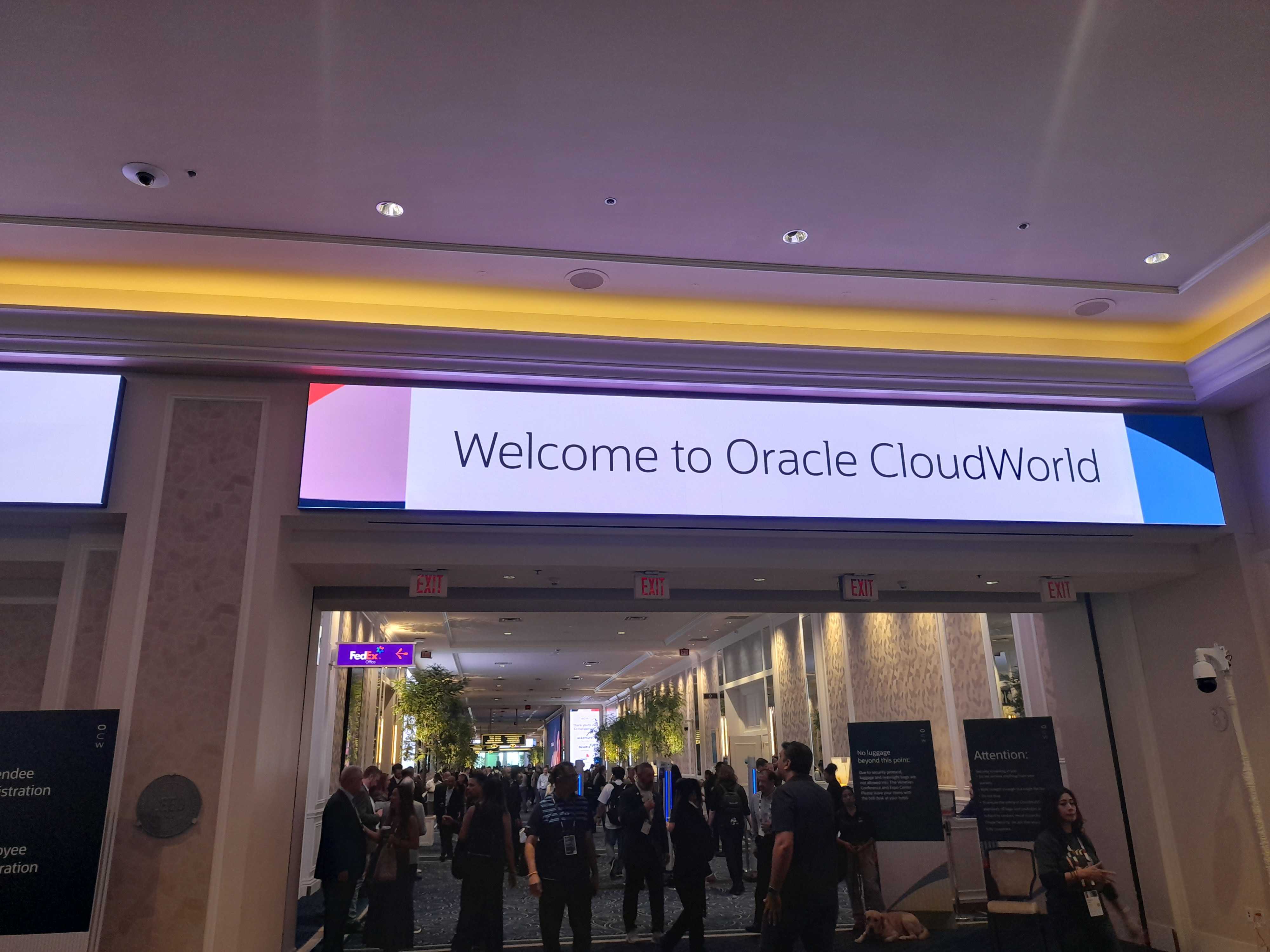
We're making our way over to the keynote now, along with the rest of the media and analyst attendees.
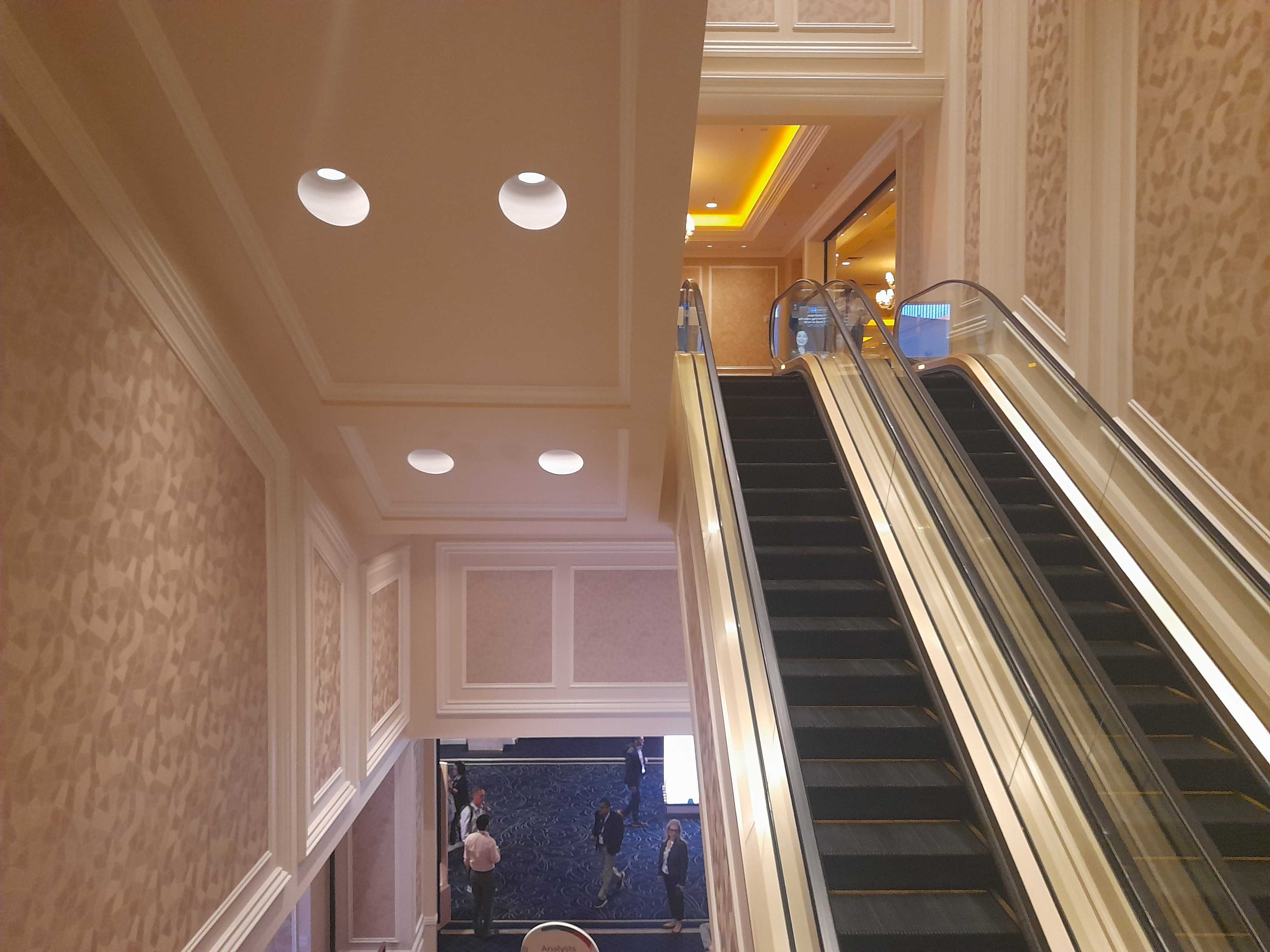
It’s filling up in the keynote hall, which is even bigger than the one for SuiteWorld yesterday.
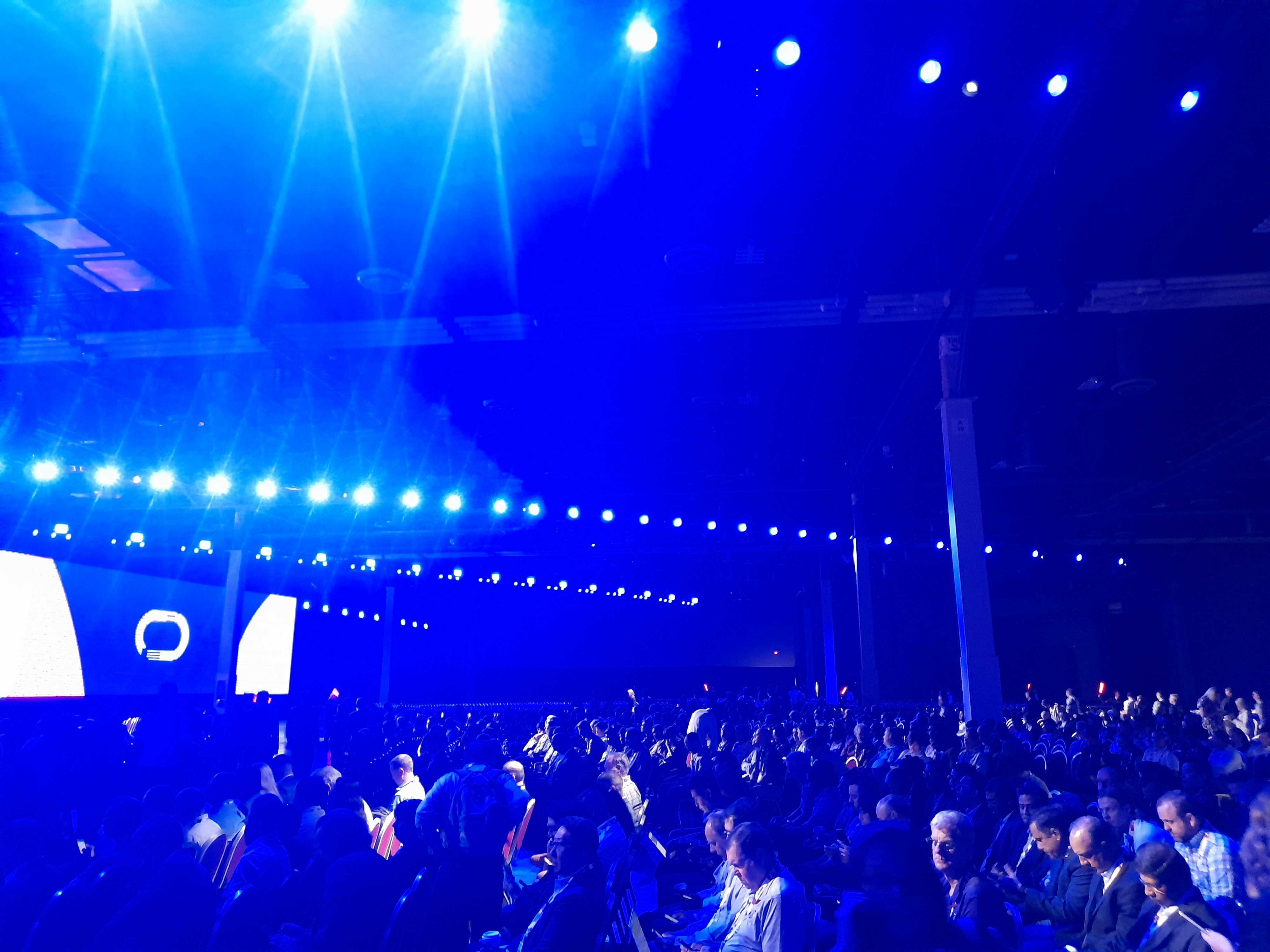
There’s still some time to kill - why not check out a bit more of our coverage here:
Oracle bets on vector search capabilities to drive enterprise AI value
Oracle is betting big that every country will soon have its own sovereign cloud
The keynote stage is all set up and ready for Catz's address to begin.
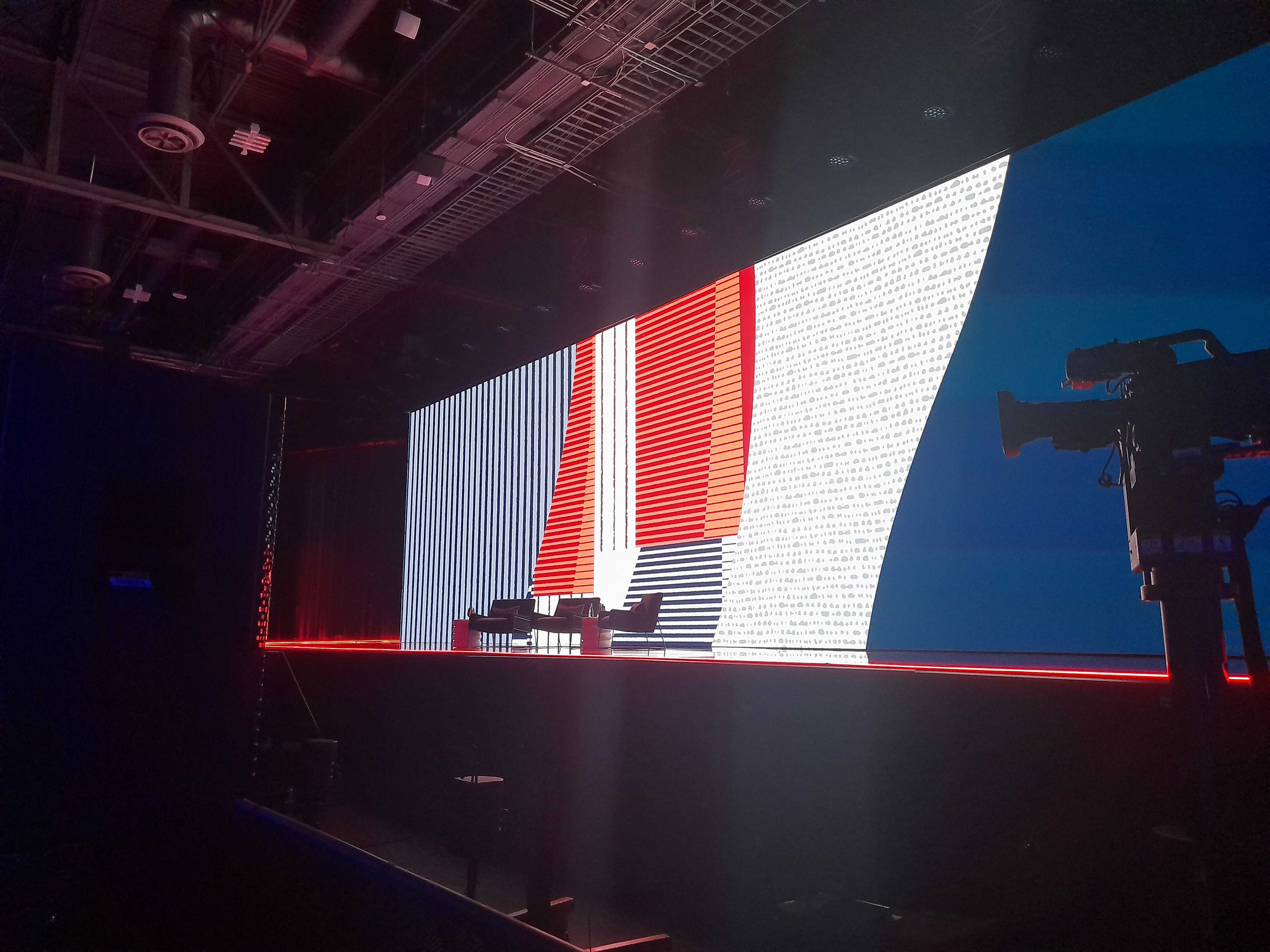
And we’re off! As is often the case, today’s keynote begins with an impressive promotional video that spans all the screens across the length of the keynote hall (which is a lot). Following that, Catz hits the stage, welcoming the applauding crowds.
“You - our customers - are what brings this all together for us,” Catz says, likely hinting at the theme for today's keynote. Oracle builds technology for customers to run it anywhere they want, Catz adds.
She’ll be showcasing Oracle’s “partnership with you” in today’s keynote, referring of course to the many hundreds of customers and partners here in attendance today.
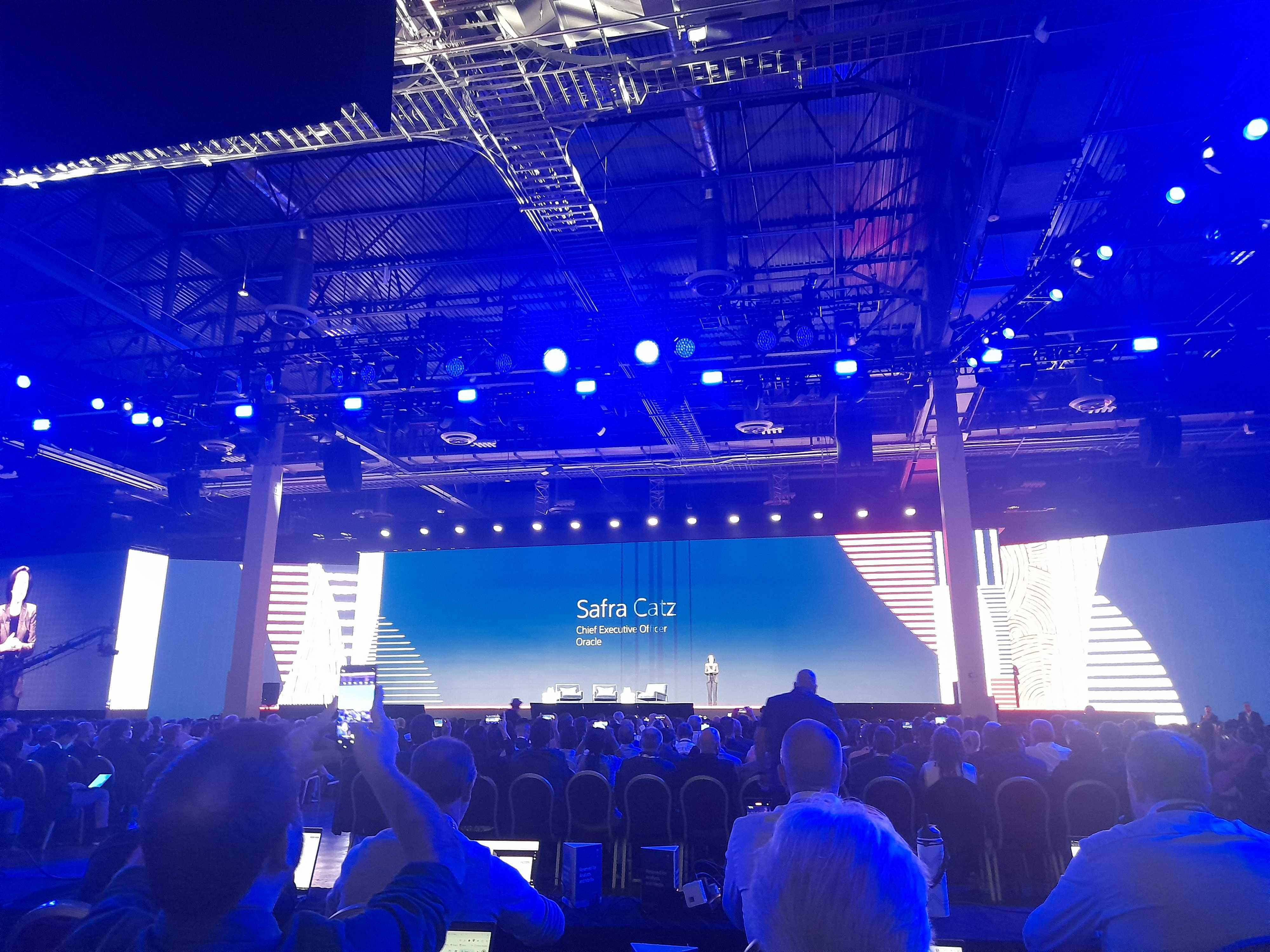
Without much waiting around, Catz introduces the first customer - MGM Resorts International. Bill Hornbuckle, CEO of the firm, takes to the stage to chat with Catz about their story with Oracle.
Amusingly, MGM is a big name right here on the Las Vegas strip, where all the attendees of CloudWorld are staying. Hornbuckle talks about the change that’s happened in Vegas and the hospitality industry as a whole before getting into the more technical aspects of the business.
“Because of our scale, it is about technology,” Hornbuckle says. Tech plays an important role in improving the experience of customers, such as digital concierge or digital check-in features.
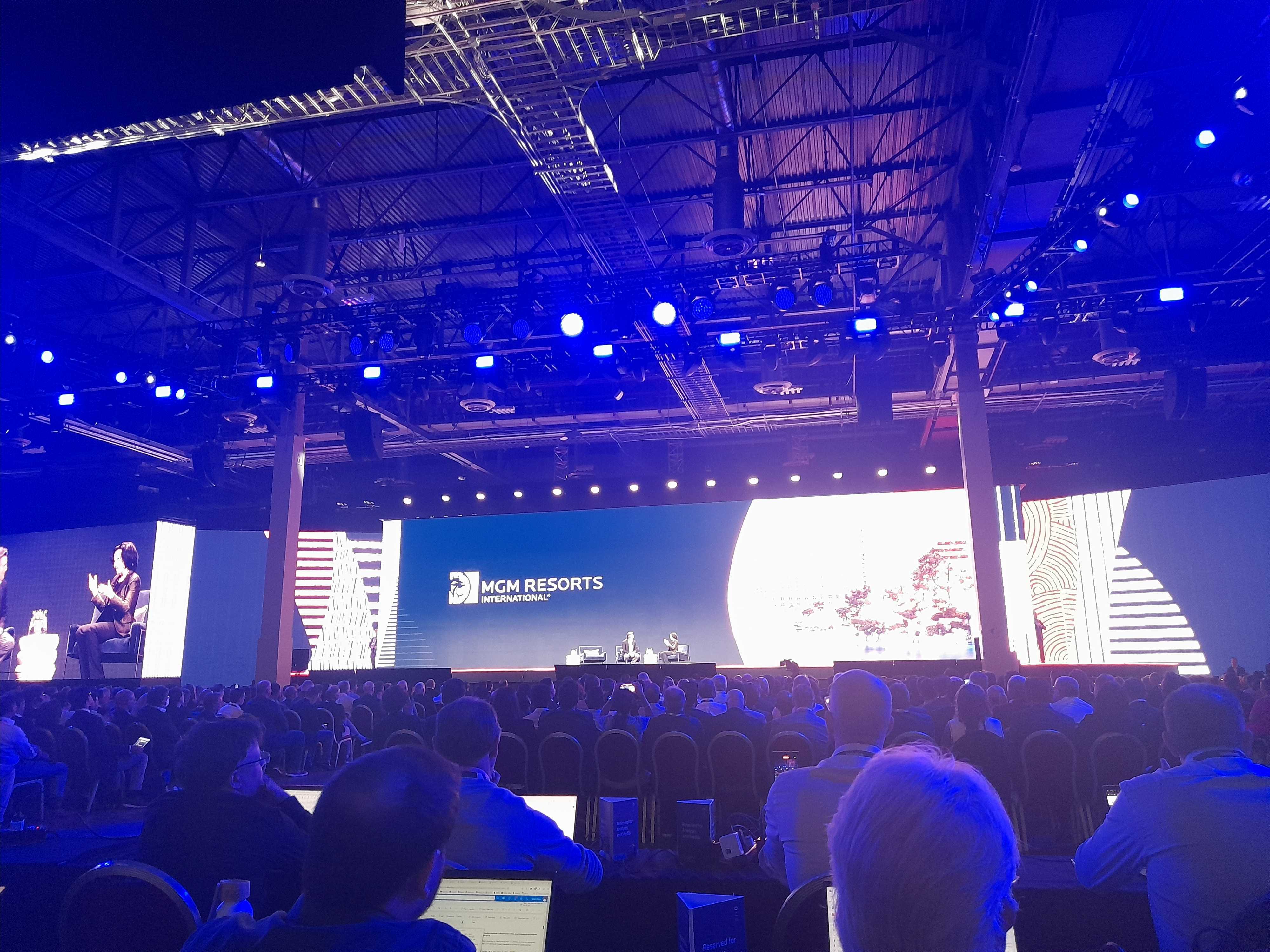
Now Hornbuckle moves on to the important part - its use of Oracle. The firm uses Fusion, for example, which has helped to reduce labor and streamline financial processes, among other things.
And how does AI fit in, Catz asks? Hornbuckle says the “ultimate vision” for AI at MGM is to learn about customers, making experiences more customizable and tailored to individuals.
Next up, La’Naia Jones, CIO of the Central Intelligence Agency (CIA). This customer is particularly special to Oracle, Catz says, as the CIA was Oracle's first-ever customer.
Jones talks about needing to use data to “augment” the CIA's intelligence, looking to create insights that could help the CIAs global aims. Cyber security is predictably a big topic for the CIA, as well.
The CIA is also looking into AI. This could help with looking at vast amounts of data, for example. Delivering capabilities like this to a group such as the CIA can be difficult, but Catz maintains that these sorts of customers teach Oracle a great deal.
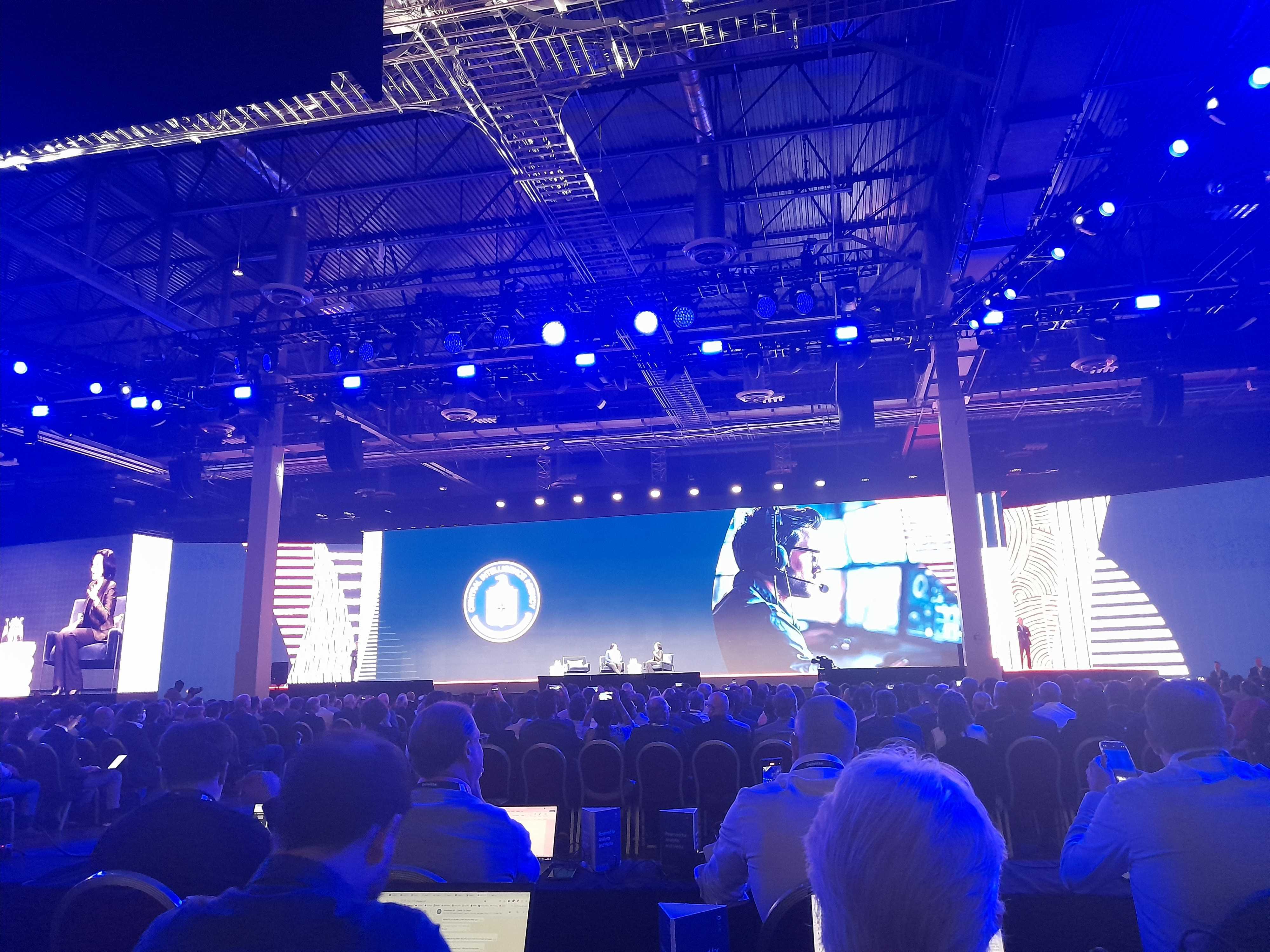
There’s no time to rest - Catz now gets Bernard Gavgani and Jean-Yves Fillion onto the stage, CIO and CEO of bank BNP Paribas. Like the CIA, it’s another firm that deals with sensitive data that needs strong security, helping to further cement the sense of Oracle as a trusted cloud vendor.
Gavgani talks about technology as the heart of BNP Paribas. They want to provide the best solution to their customers by gathering databases into “one single area” unified under a single form of management.
They want to do this within their “own premises,” and Oracle has taken its time to understand this aim from BNP Paribas and to ensure that it was achieved - Gavgani even pauses to thank Catz directly for this.
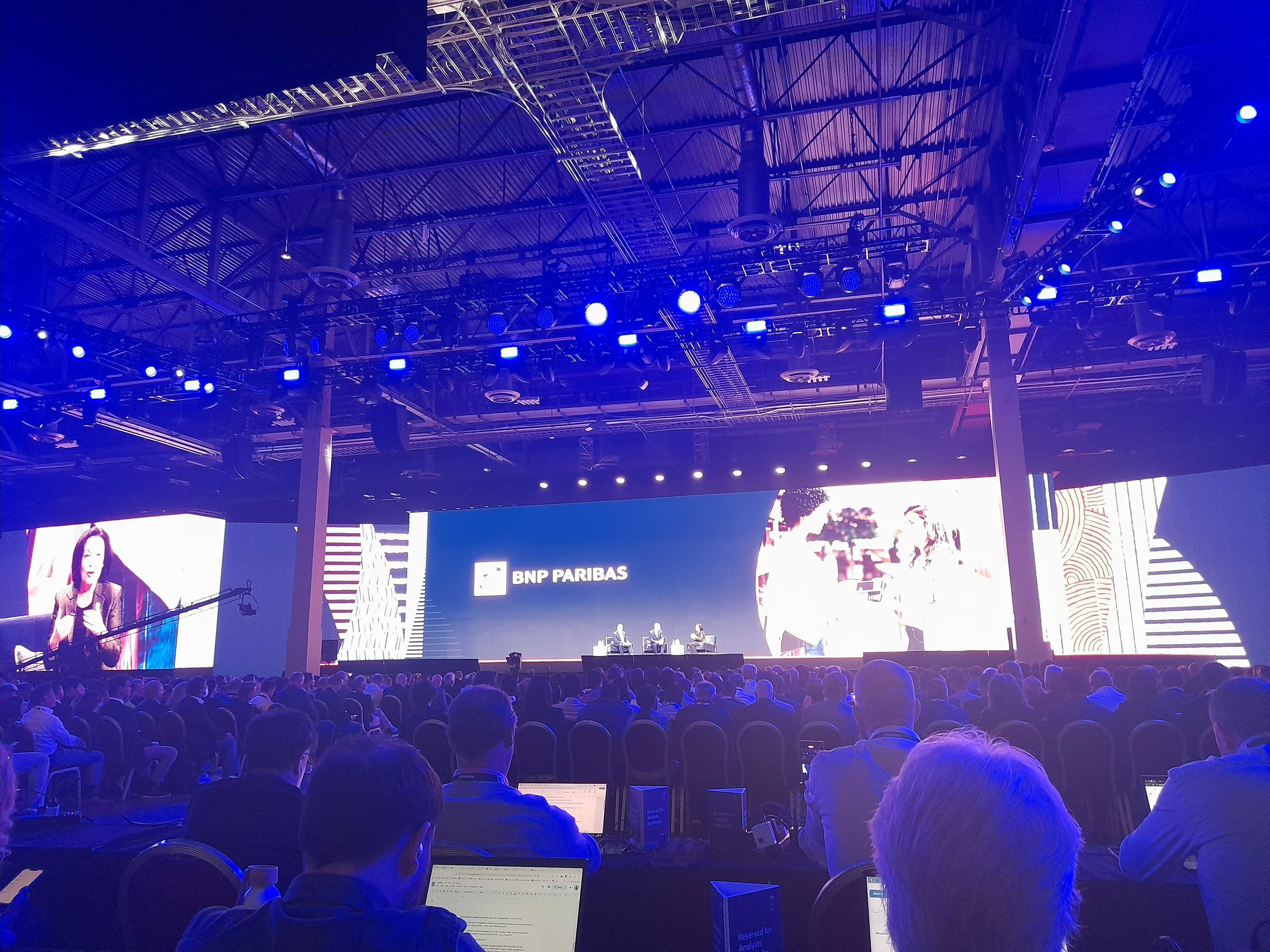
Cloudflare is next on the billing, with Catz welcoming Co-founder and COO Michelle Zatlyn to the stage as the representative. Security and resilience are core to Cloudflare’s offerings, according to Zatlyn.
“It’s not getting safer out there,” Catz says, referring to the cyber security landscape. But why OCI, she asks? Zatlyn responds, commending the innovative nature of Oracle in a dynamic, ever-changing world. She also likes that Oracle is “priced for performance.”
Keeping on top of different clouds - including different workloads in different environments - is made simpler via Oracle. Though it can be difficult in terms of complexity, Oracle works well in these sorts of multi-cloud environments, according to Katlyn.
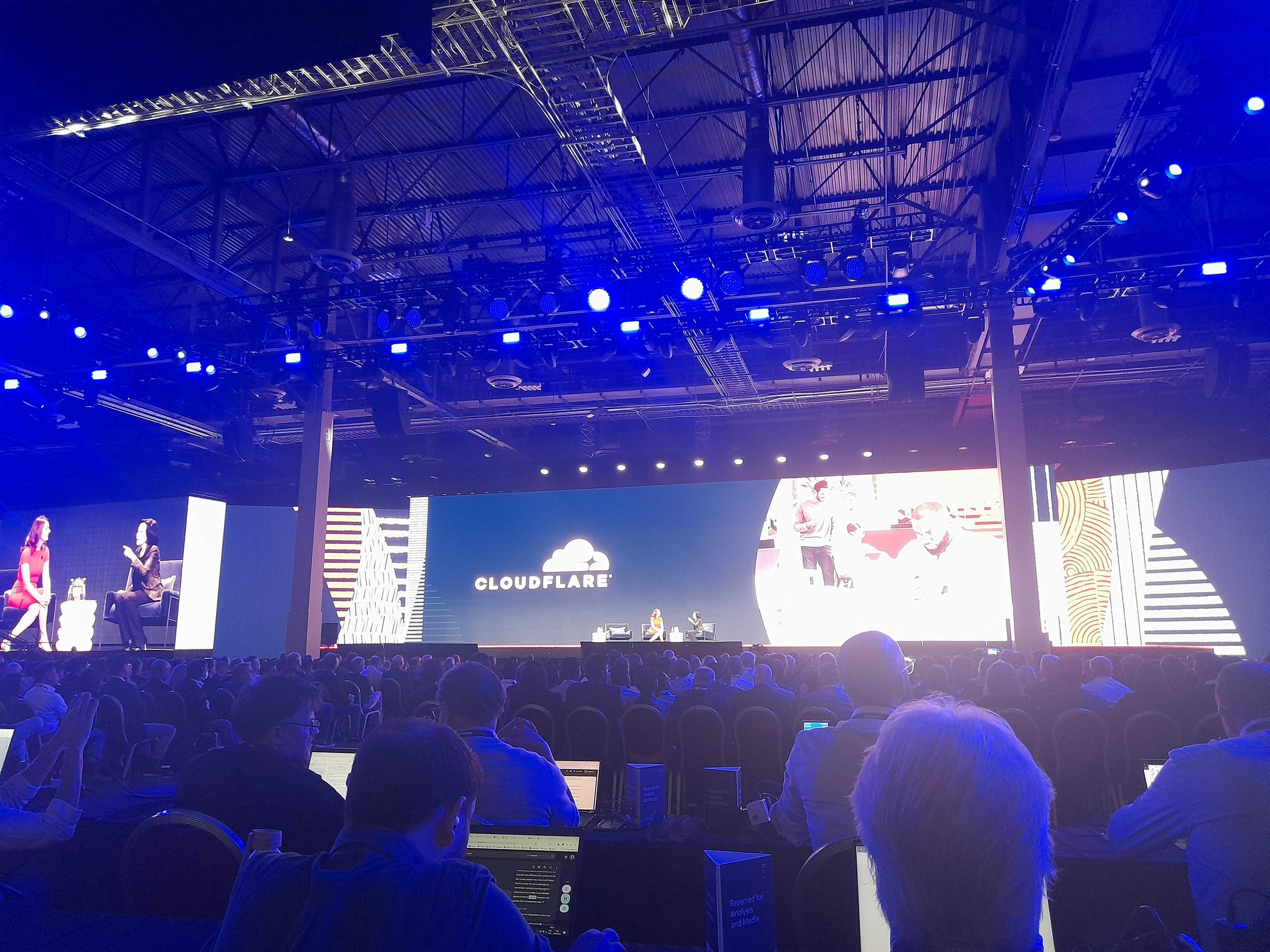
Entel is next. Antonio Büchi group CEO is called up to chat with Catz about the firm’s move to the cloud, and he begins by outlining Entel’s role and aims within the wider industry.
The keynote is running slightly over time and some attendees are exiting the hall - but Catz and Büchi continue to chat, discussing the importance of ensuring customer satisfaction.
Customer success is crucial here, as it has been throughout this keynote - the more successful Oracle’s customers are, the more successful Oracle itself is. That seems to be what Catz is hammering home in today's opening talk.
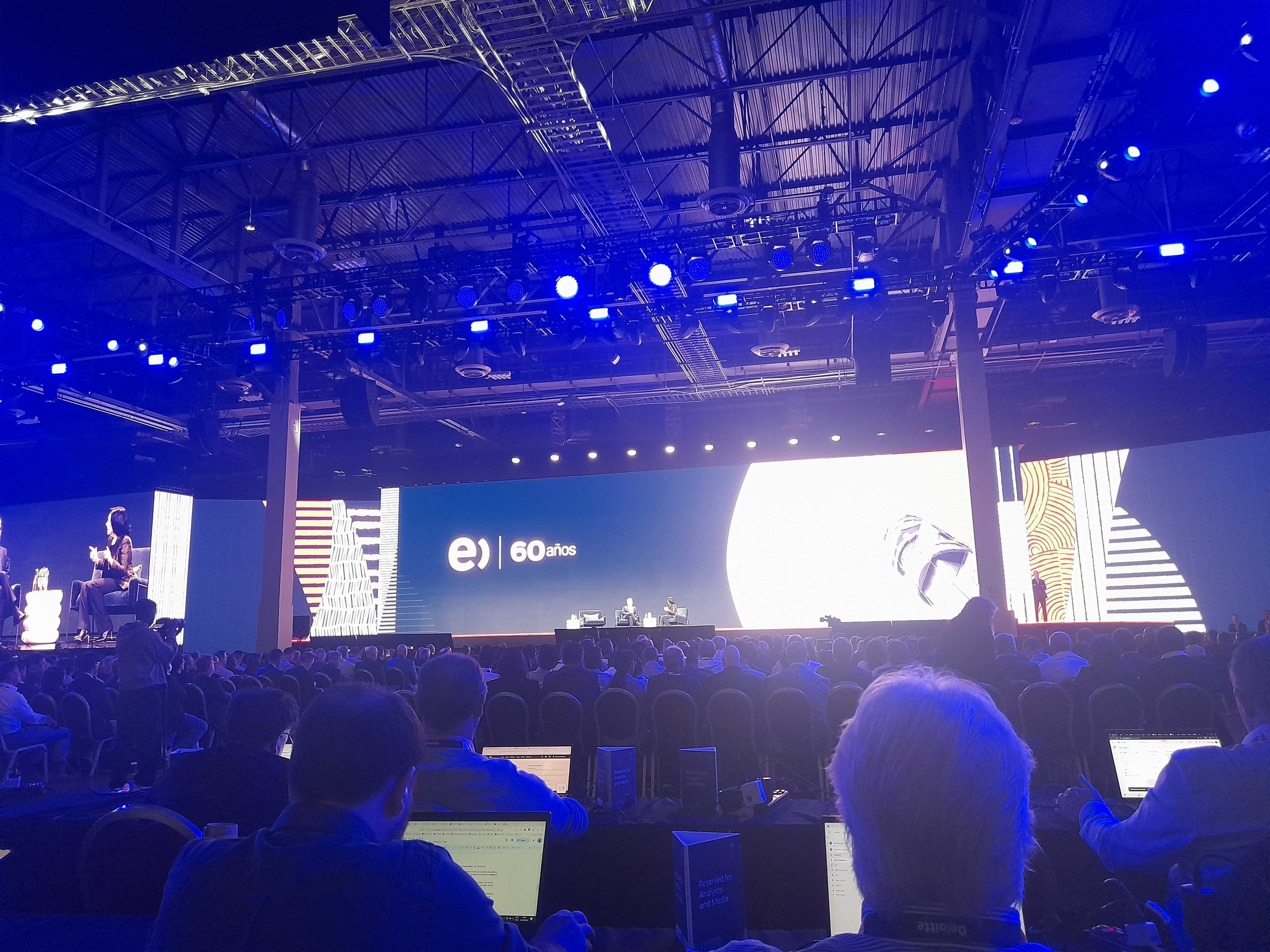
It looks like it’s time to wrap up this morning's keynote - Catz recaps some of the keynote's key takeaways before thanking the audience. As she leaves the stage, the crowds get out of their seats to leave the main hall.
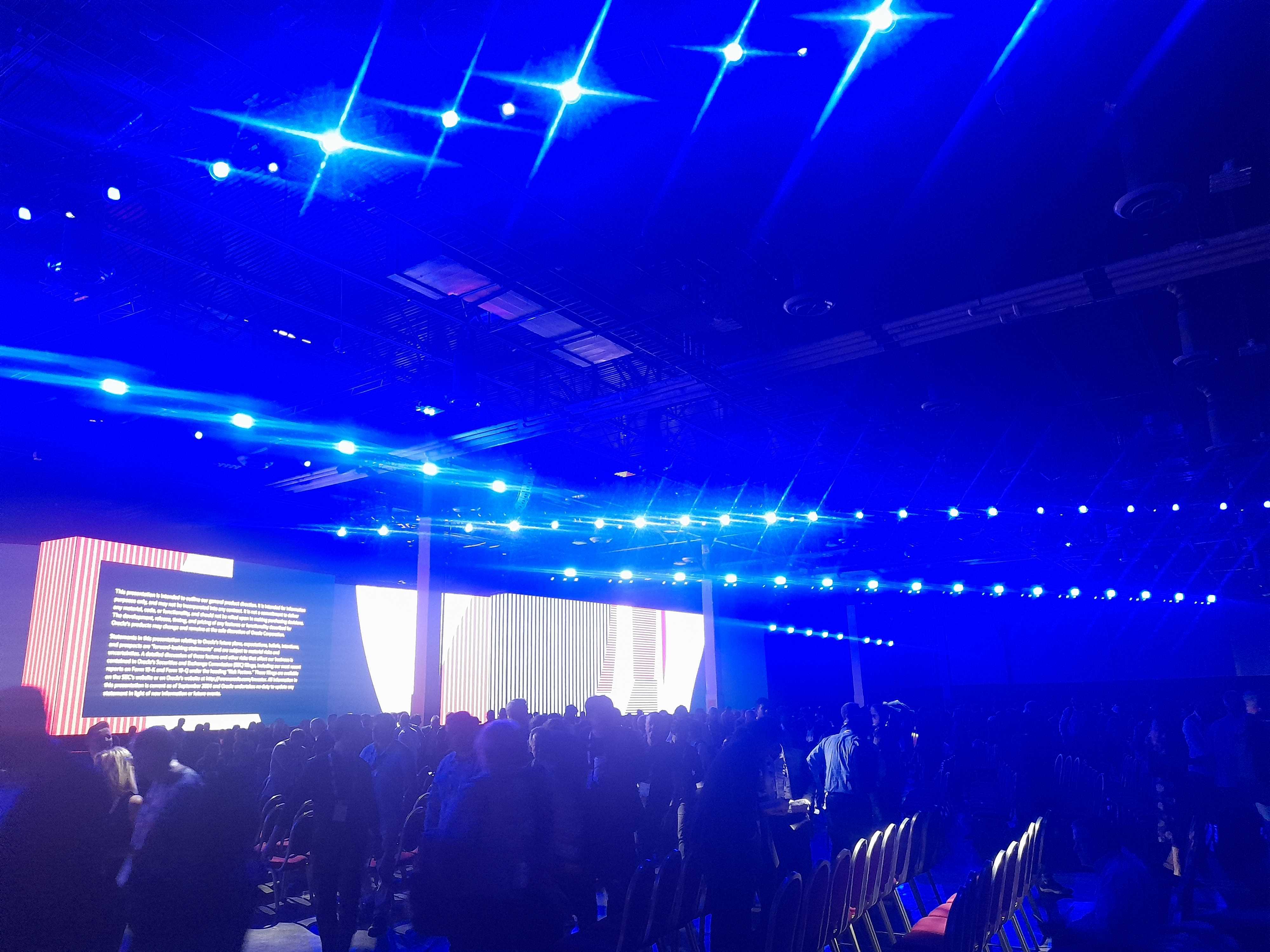
There’s a break now, until 1 PM (PDT) this afternoon when Larry Ellison will be taking to the stage to go through more announcements, as well as the firm’s vision and strategy. Make sure to tune back in for more updates!
We’re back! The crowds are filing in to hear CTO Larry Ellison deliver his keynote, ‘Oracle Vision and Strategy.’
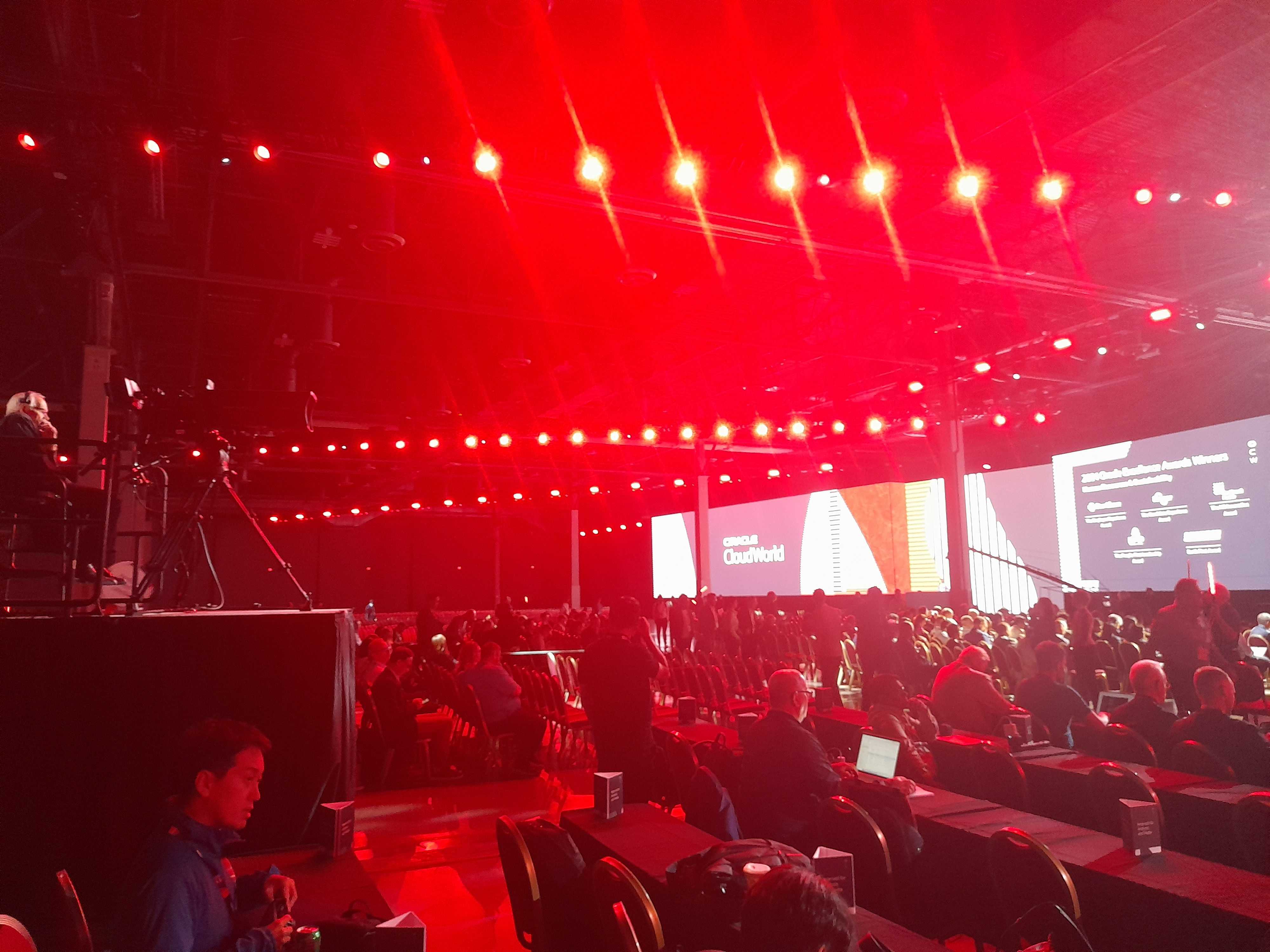
Expect details on all of Oracle’s latest announcements at this keynote as Ellison takes to the stage to talk about what the company’s been up to.
We’re almost ready to go as the last of the crowds take their seats in the main hall.
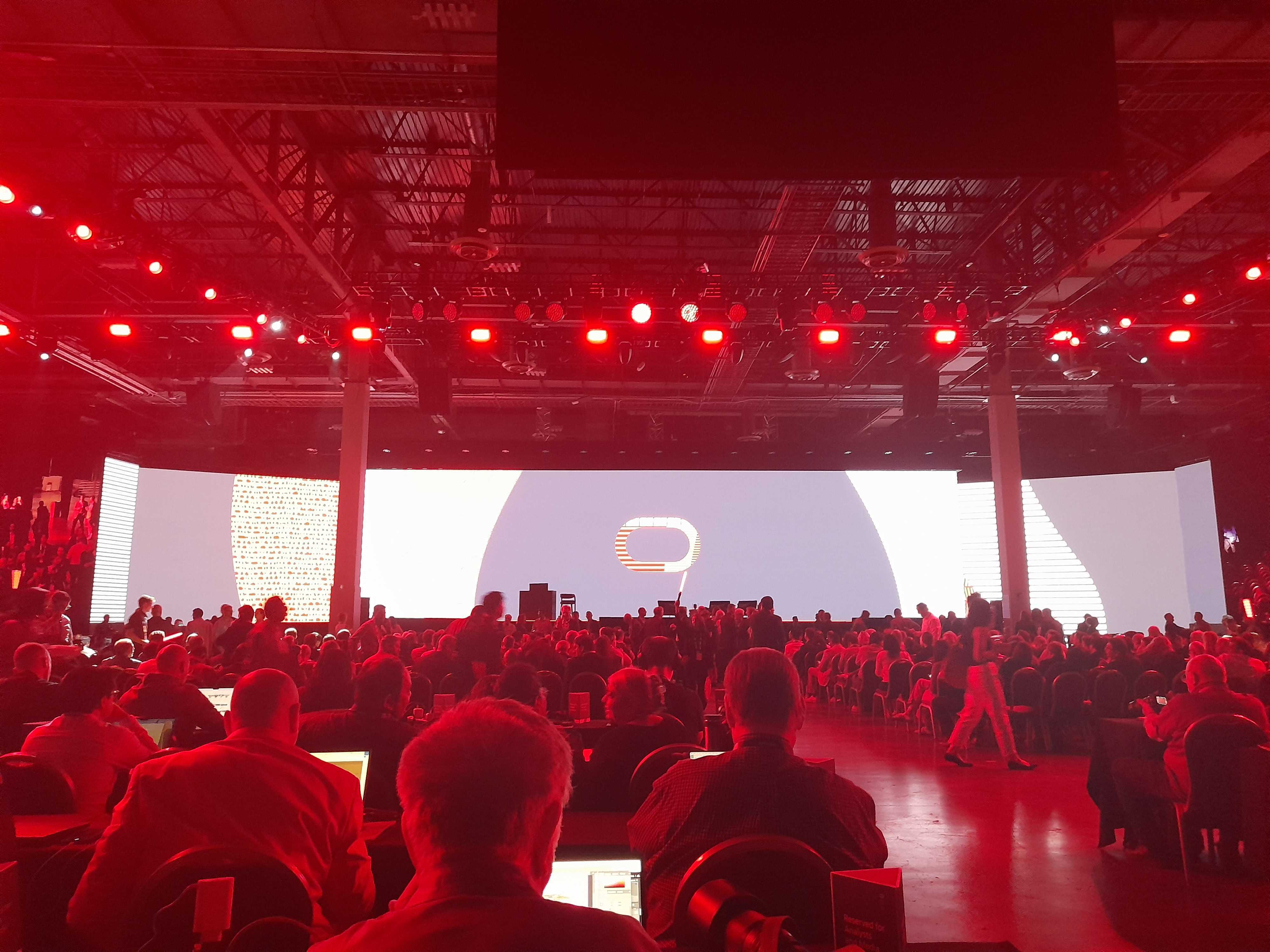
After another action-packed promo video, Ellison hits the stage and he gets straight to the point. The first topic he’ll be covering will revolve around multi-cloud before he moves on to talking about AI and cloud security.
“The clouds are becoming open - they’re no longer walled gardens,” he says, in reference to multicloud.
He then talks about cloud security, in a world where ransomware attacks are on the rise. Ellison thinks AI will help the industry here, and Oracle is reportedly deploying the technology to bolster security.
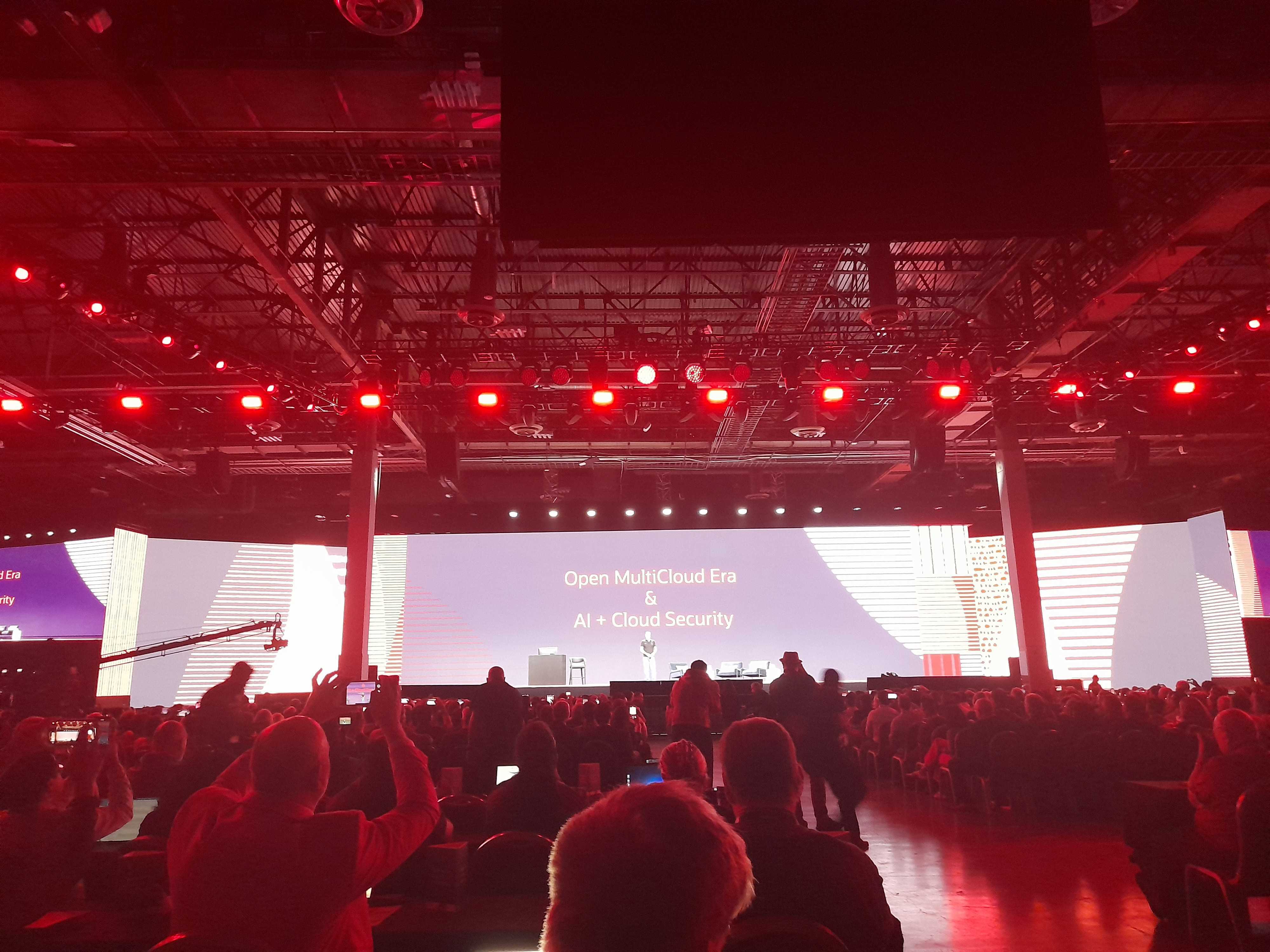
However, clouds don’t work well enough together, Ellison says. Some customers want to move Oracle Exadata databases and applications to AWS, for example - there needs to be multi-cloud capabilities to make that happen.
Connecting clouds can prove complex, as well. Network interconnections can be tricky and speed can be an issue. The better approach would be to embed an Oracle database within AWS, he adds.
Ellison grabs himself a chair before continuing on to reveal the first announcement - a new partnership with AWS that embeds Oracle databases with AWS systems to aid multi-cloud use cases.
Now he invites Matt Garman, AWS CEO, up on stage to go into more detail about the announcement.
“It’s what customers have asked for for a very long time,” Ellison says, as the pair chat about the demand that’s existed for an Oracle, AWS partnership.

Now the pair invite another guest, Andy Zitney, CTO at Slate Street. Zitney represents an Oracle customer that’s set to benefit from the new AWS integration. Zitney expects to be operating out of around 43 data centers globally as the firm needs to be functioning almost everywhere.
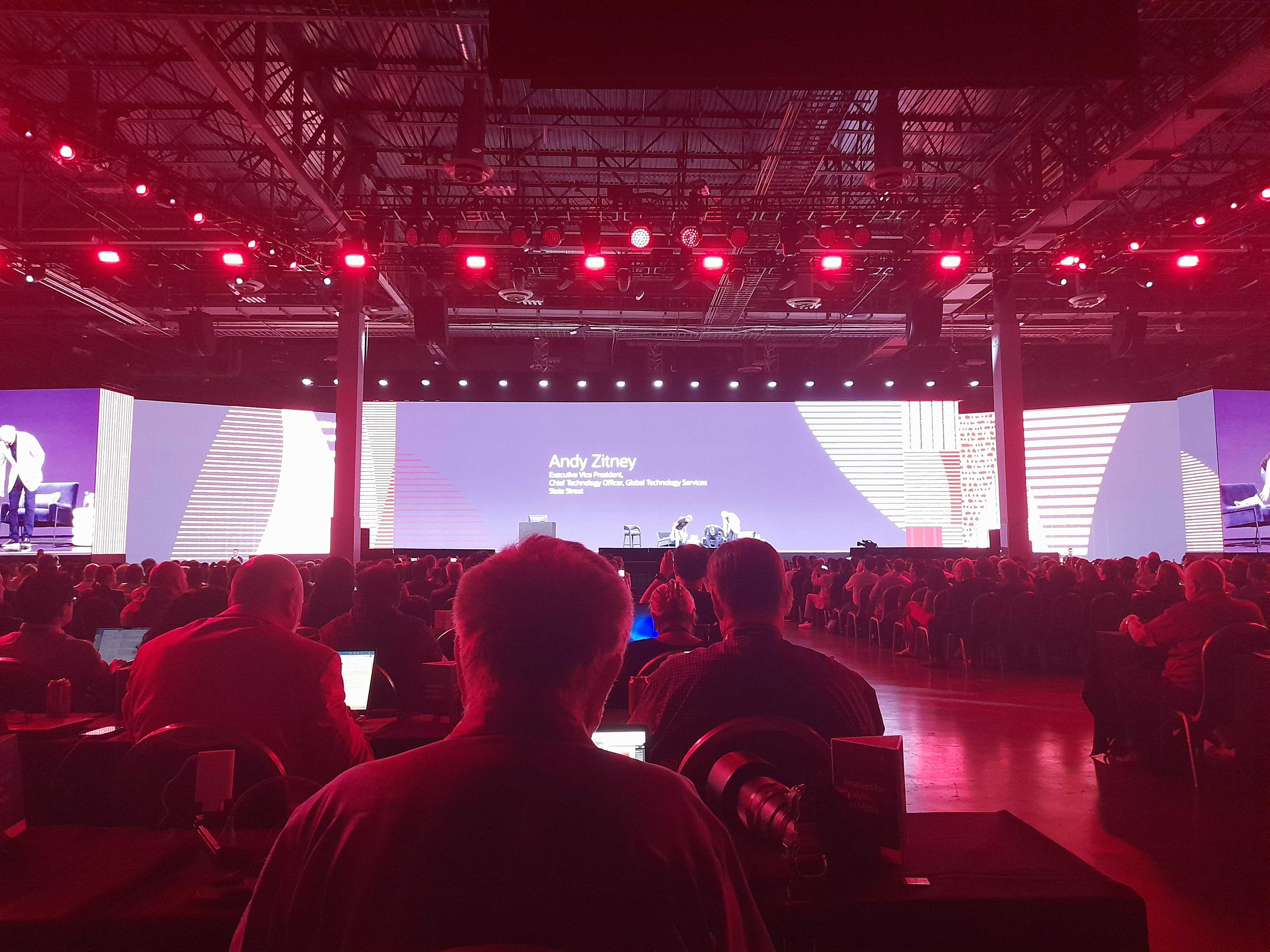
Now we’re back with just Ellison who carries on talking about multi-cloud generally. Ellison talks about how OCI data centers now exist within the big three major cloud providers - AWS, Google, Microsoft.
They are also building data centers within Fujitsu, NTT, and NRI, Ellison adds. Oracle is set on driving multi-cloud - and positioning itself as the most committed proponent of this sort of cloud operation.
“Our private cloud is absolutely identical to our public cloud,” Ellison goes on, introducing another aspect of the Oracle offering. Oracle is famed for its private cloud offerings, often turned to as a cloud provider by companies with more sensitive data.
Now for the next topic - AI and cloud security. Ellison wants to ask how AI can be utilized to “dramatically” improve cloud security.
“Passwords are a terrible idea,” he says - they are difficult to remember, easy to steal. As such, Ellison thinks there must be more options out there for ensuring security in the enterprise.
He goes briefly over some of the core tenets of security - data security, application security, user identity, and network security - before going into each one in more detail.
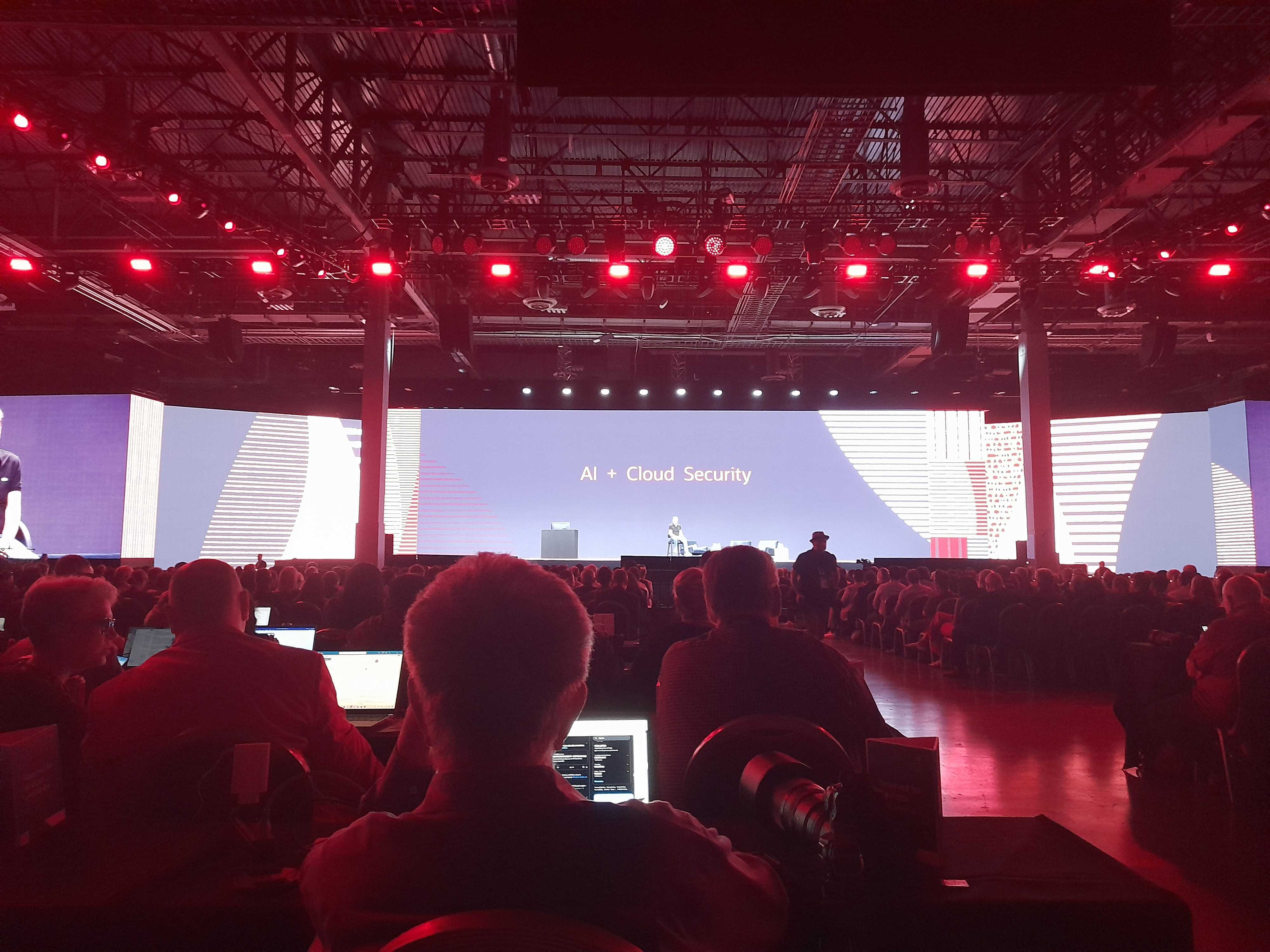
Human error is the big issue here, Ellison thinks. With automation, security can be made much stronger by removing the potential for users to make mistakes in, for example, configurations.
Now for application security - specifically, the talking point here is code generation. With Oracle’s application code generator, APEX, security comes front and center. “It will not generate a vulnerability,” Ellison says.
Remember Ellison doesn’t like passwords? Que the next topic, biometric authentication. Computers are entirely able to be integrated with biometric authentication, such as via facial recognition or fingertip recognition via the keyboard.
“Biometric logins are much easier to use … and much more secure,” Ellison claims. He maintains that it is very difficult to hack into systems that are protected biometrically.
Now for network security. This is an incredibly complex area, Ellison says, as it needs to be incredibly high-performance but also highly secure.
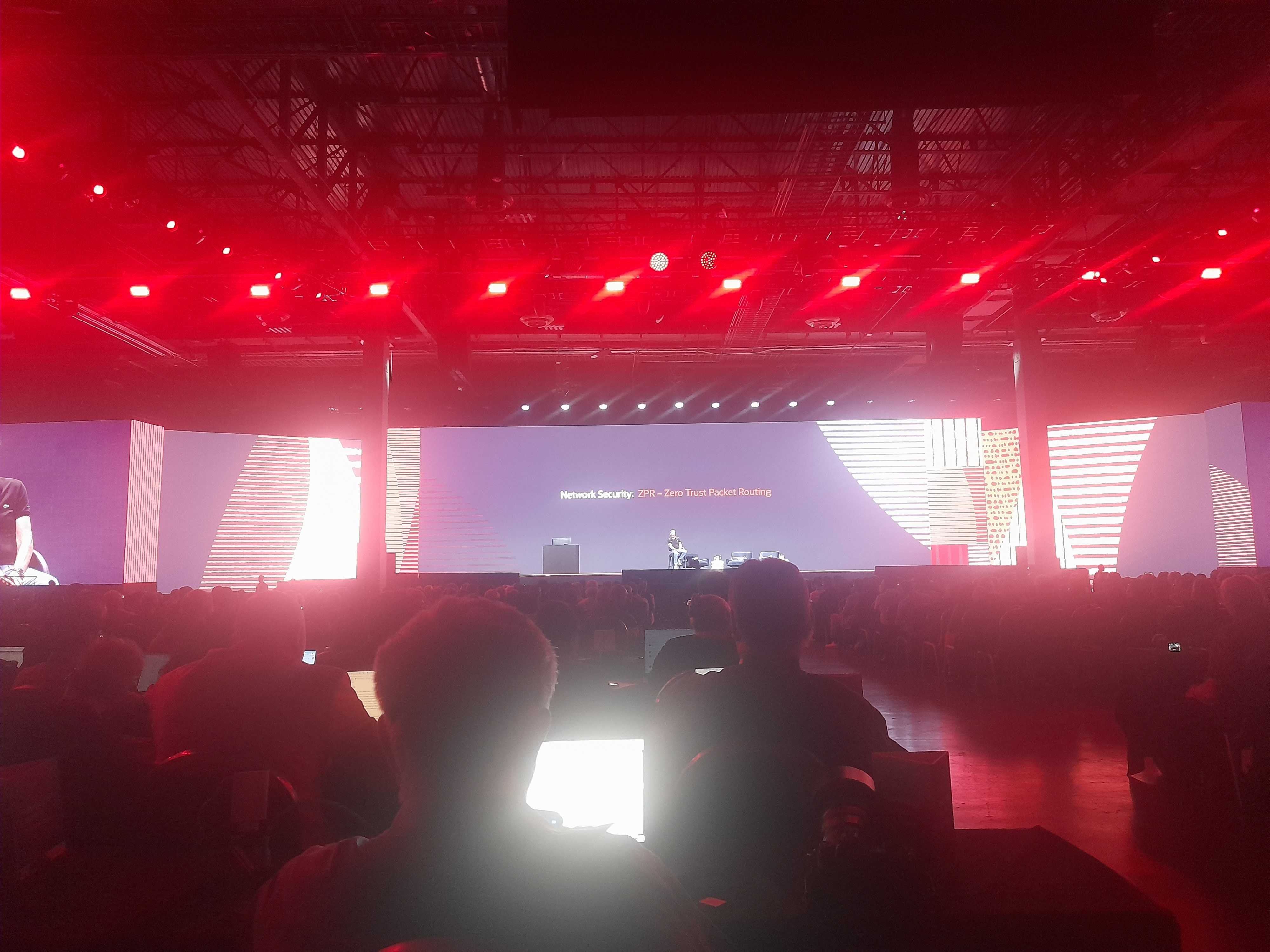
Within OCI, Oracle has been able to integrate Zero Trust Packet Routing (ZPR) to help advance network security and ensure that the complexities of network security are made more manageable.
“The Oracle cloud network is isolated from the public internet,” Ellison says, yet further ensuring a level of network security within Oracle.
Combining biometric identity with this “new generation” of ZPR can “stop most serious cyber attacks,” Ellison says.
And with that, Oracle’s day-one keynotes are over! Make sure to tune back in at 9 AM (PDT) tomorrow to catch the next keynote from EVP of Oracle Applications Development, Steve Miranda.
While we wait for the keynote to kick off, why not check out some of our recent coverage of the event:
‘Many of our long-time rivals are now our partners’: Why Oracle is doubling down on multi-cloud
Oracle has made plenty of announcements so far, including a deal with AWS that will see the firm look to support multi-cloud adoption.
The crowds are flooding in to hear Steve Miranda’s talk, focused this morning on AI.
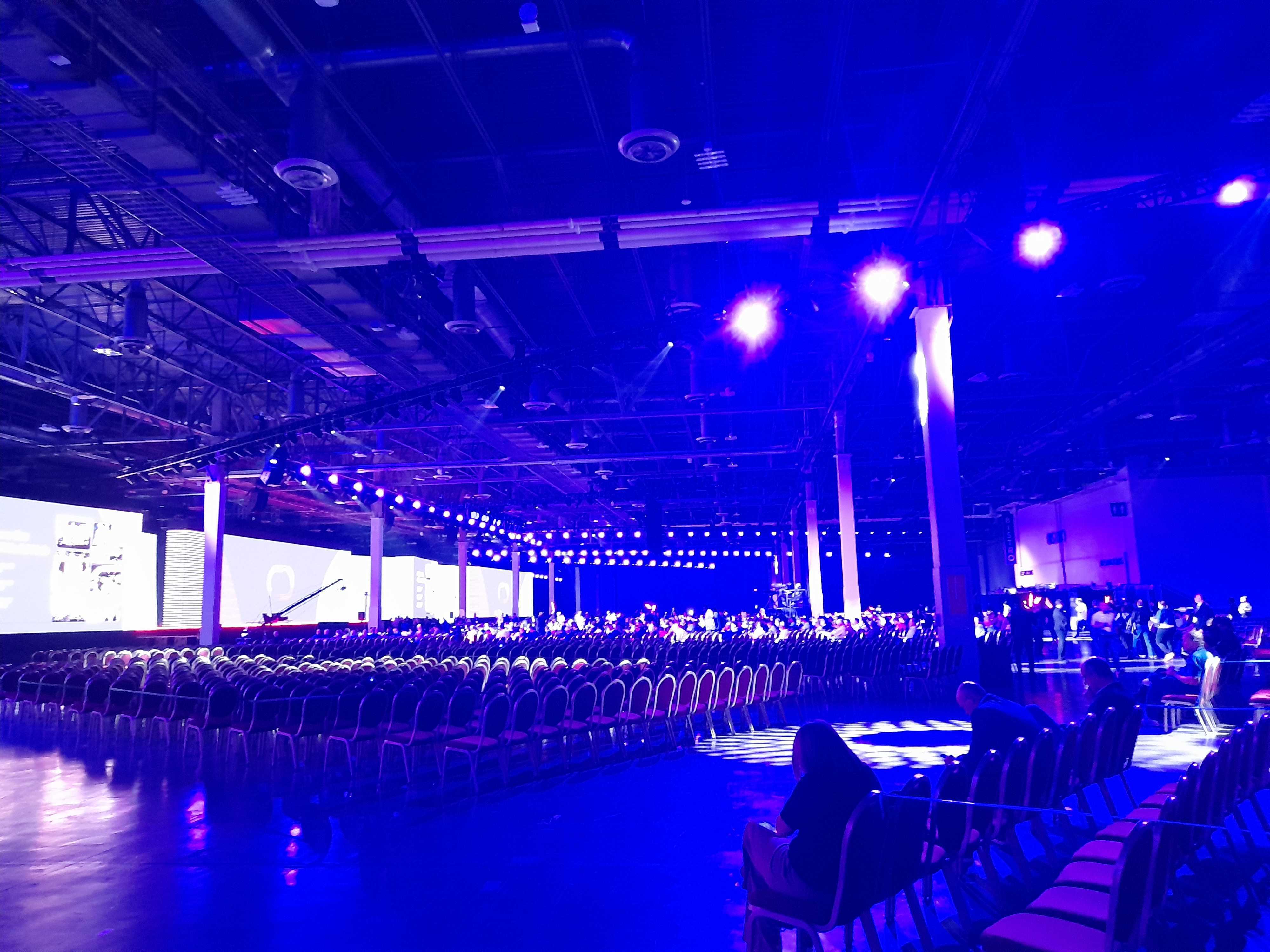
Oracle is starting things off with another promo video, this time centered around Oracle AI in Oracle Fusion. Following that, Steve Miranda hits the stage to loud applause from the gathered audience.
He goes over the “complete suite” of Oracle’s AI solutions, all built on a unified technology stack. The firm's AI apps and analytic tools run on this stack, which ensures speed and security for customers.
Miranda then pulls up a video demo to talk through, in which Oracle’s AI tool is embedded into an employee process in Salesforce.
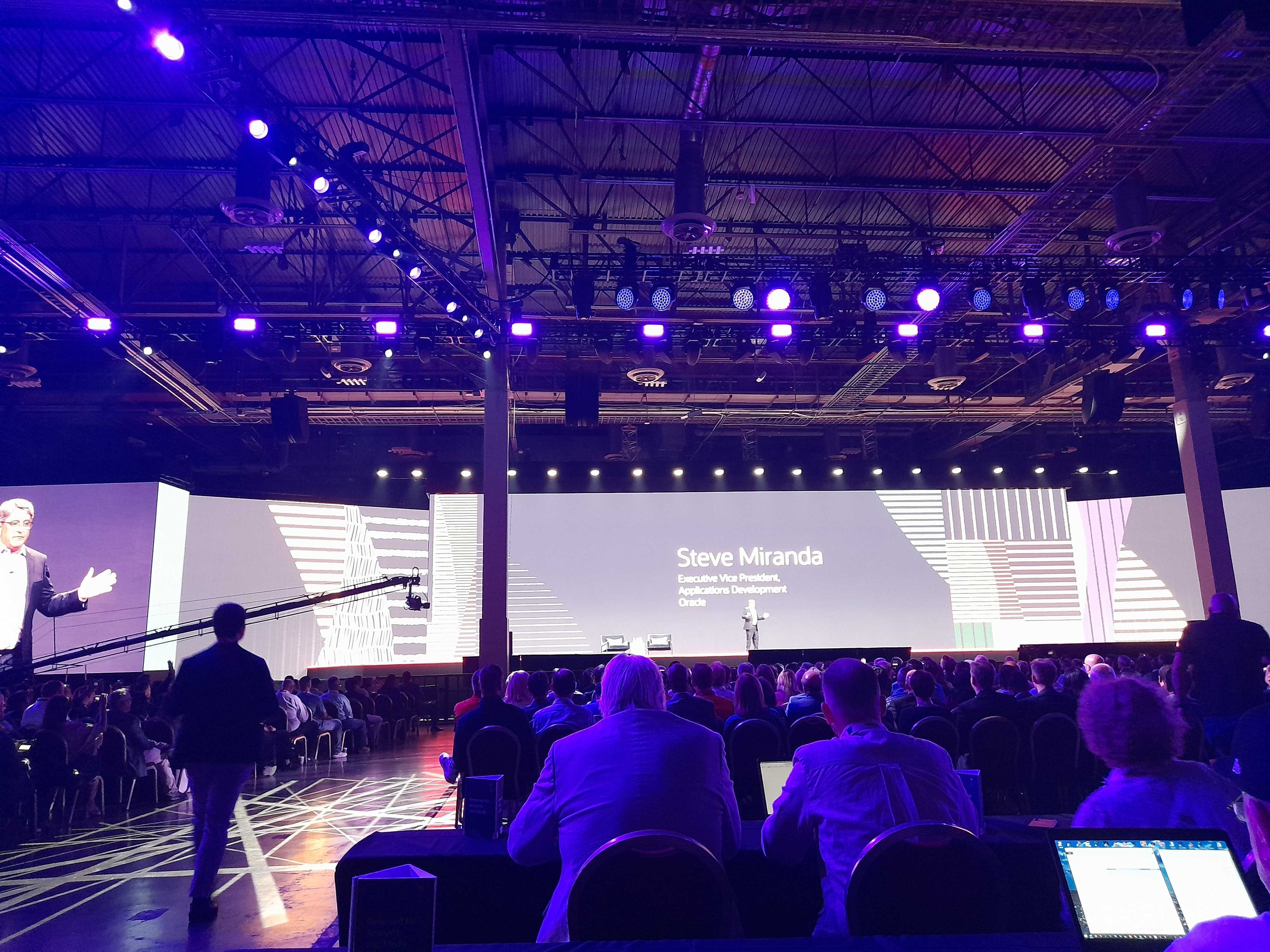
Like Catz in her opening keynote, Miranda is also going to address some of the customers achieving success with Fusion Applications. In fact, he’s even going to get one up right now - Caesar’s Palace from just over the road in Las Vegas.
Stephanie Lepori, CAAO of Caesars, is repping the firm on stage. She talks about how the business environment has changed at the hotel-casino, which in recent times has bought betting company William Hill.
But why did it choose Oracle? Lepori says that the firm quickly saw the benefit of having a single platform to operate on, particularly with regard to financials.
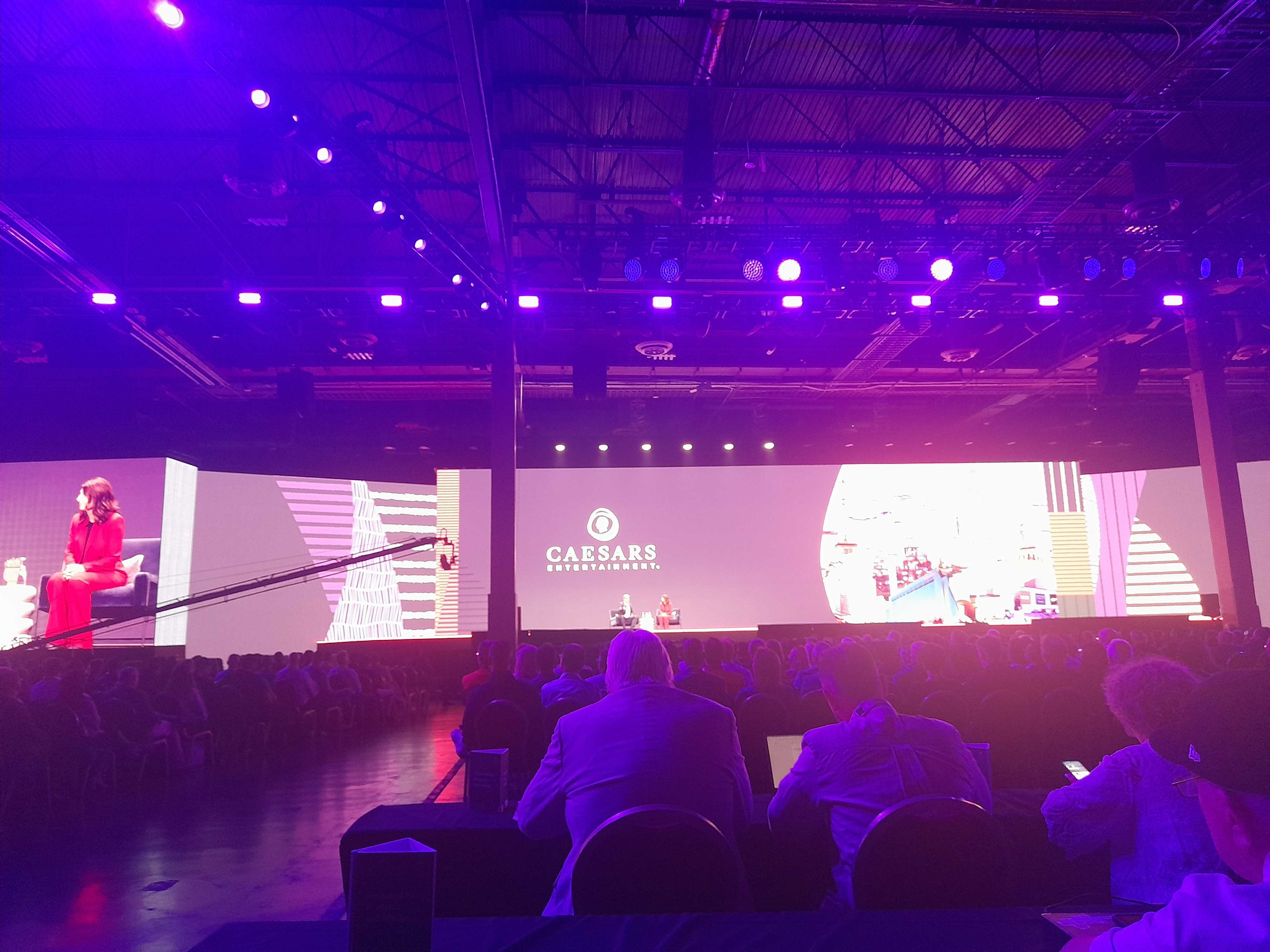
Miranda also asks about how Caesars is using or thinking about AI, to which Lepori responds that the firm wants to “utilize the toolkits” available to help drive customer experience and general operations.
“Oracle has been a great partner,” Lepori adds, looking towards the firm’s future on the platform as Miranda wraps up his chat with her.
The next section is titled ‘Innovation that Matters,’ in which Miranda will continue to expand on the potential of Oracle’s AI solutions.
“We do not charge you extra for AI,” Miranda says emphatically, explaining that the technology is embedded in Oracle products for the sole purpose of benefitting customer use cases.
He adds that Oracle uses Oracle AI within its internal operations, such as reconciling banking transactions, speeding up supply chain planning cycles, or assisting in recruitment processes.
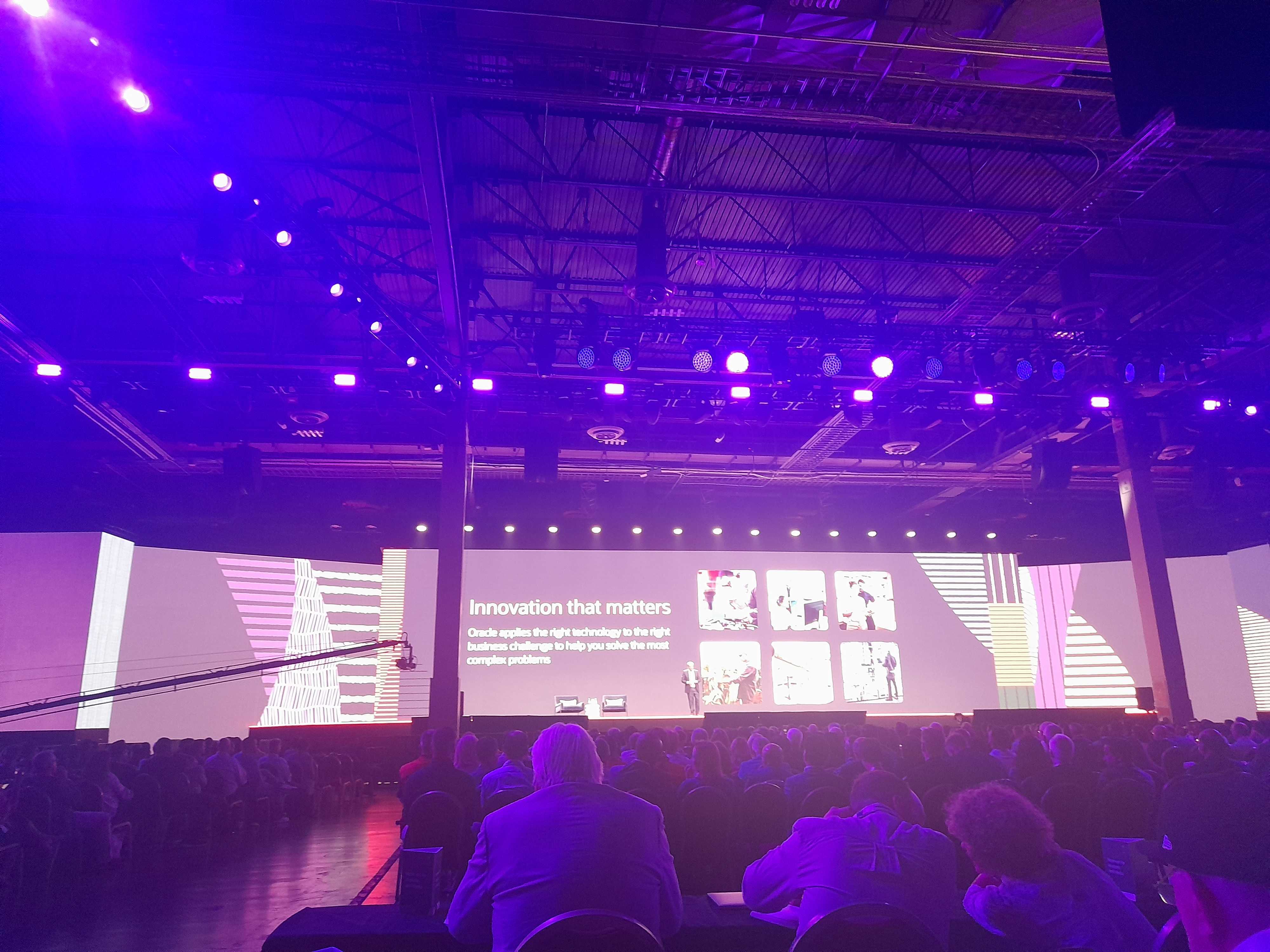
Now for another demo, in which an employee sends a receipt written in another language to one of Oracle’s AI agents, which can then read and understand it.
“It doesn’t matter what the document is,” Miranda says - you can give it to the AI agent and it can parse it and upload it, meaning users can then share or work on the documents within the Oracle platform.
Time for another customer now - Dietrich Franz, the CFO from DHL will be talking to Miranda about the firm’s user of Oracle. He goes over how he and Miranda met, at a previous Oracle event.
Franz then talks about DHL’s implementation of cloud technology and the improvements it’s seen in the business. In HR, for example, DHL is using a lot of self-service features to drive value.
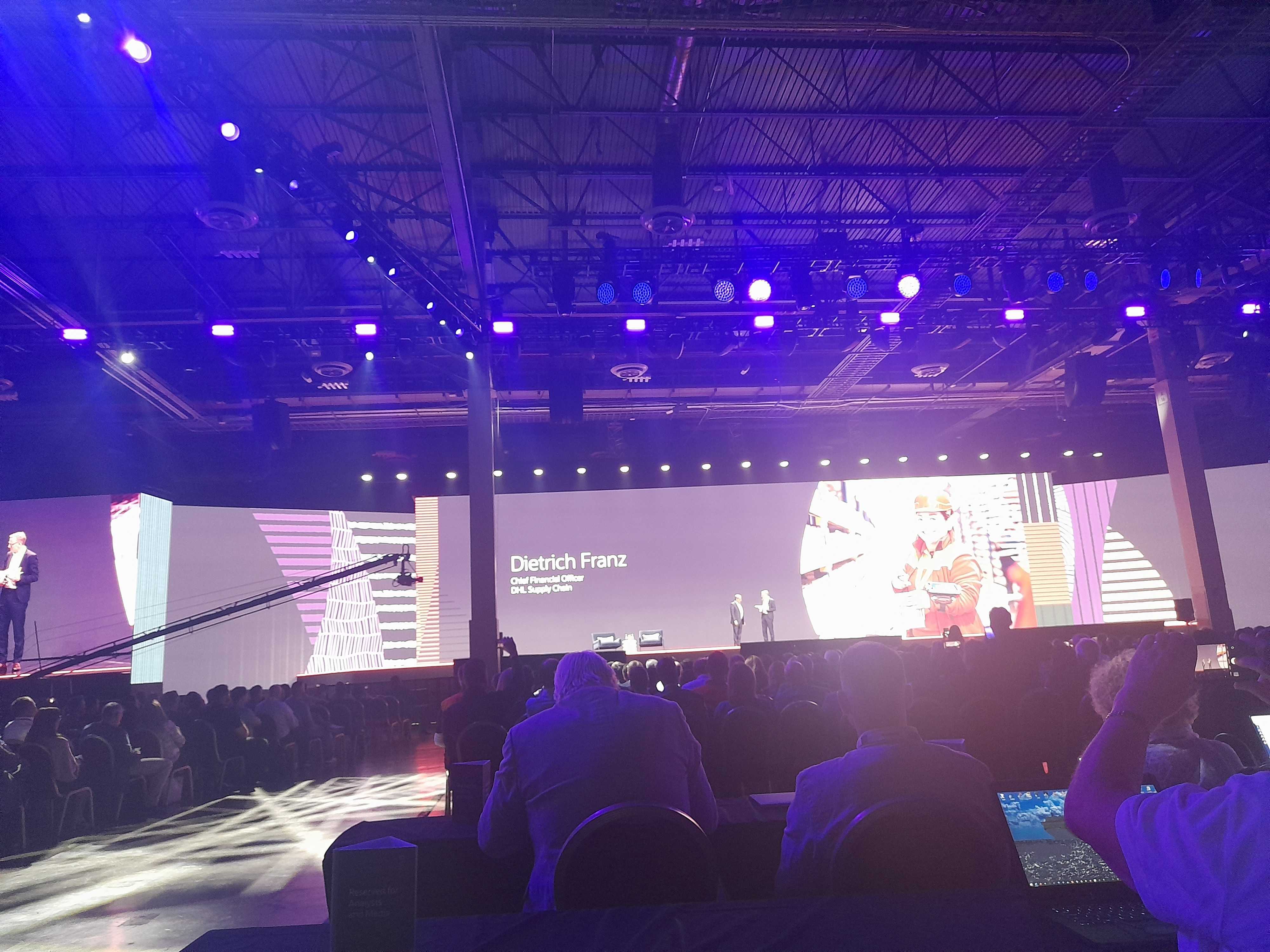
After Franz leaves the stage, Miranda moves on to talking about Oracle’s supply chain solutions. The firm’s ‘Smart Operations’ offering, for example, can assist customers in managing manufacturing, maintenance, and inventory.
Following this, another customer, Zebra, joins Miranda on stage. Matt Ausman, CIO at the firm, sits down with the Oracle exec to chat.
Ausman said the firm has been able to focus on making cost savings which it can then pass on to customers. Zebra is focused on ensuring they get things to customers when they need them.
Apparently a prerequisite of coming on stage, Ausman is also asked about the firm’s use of AI.
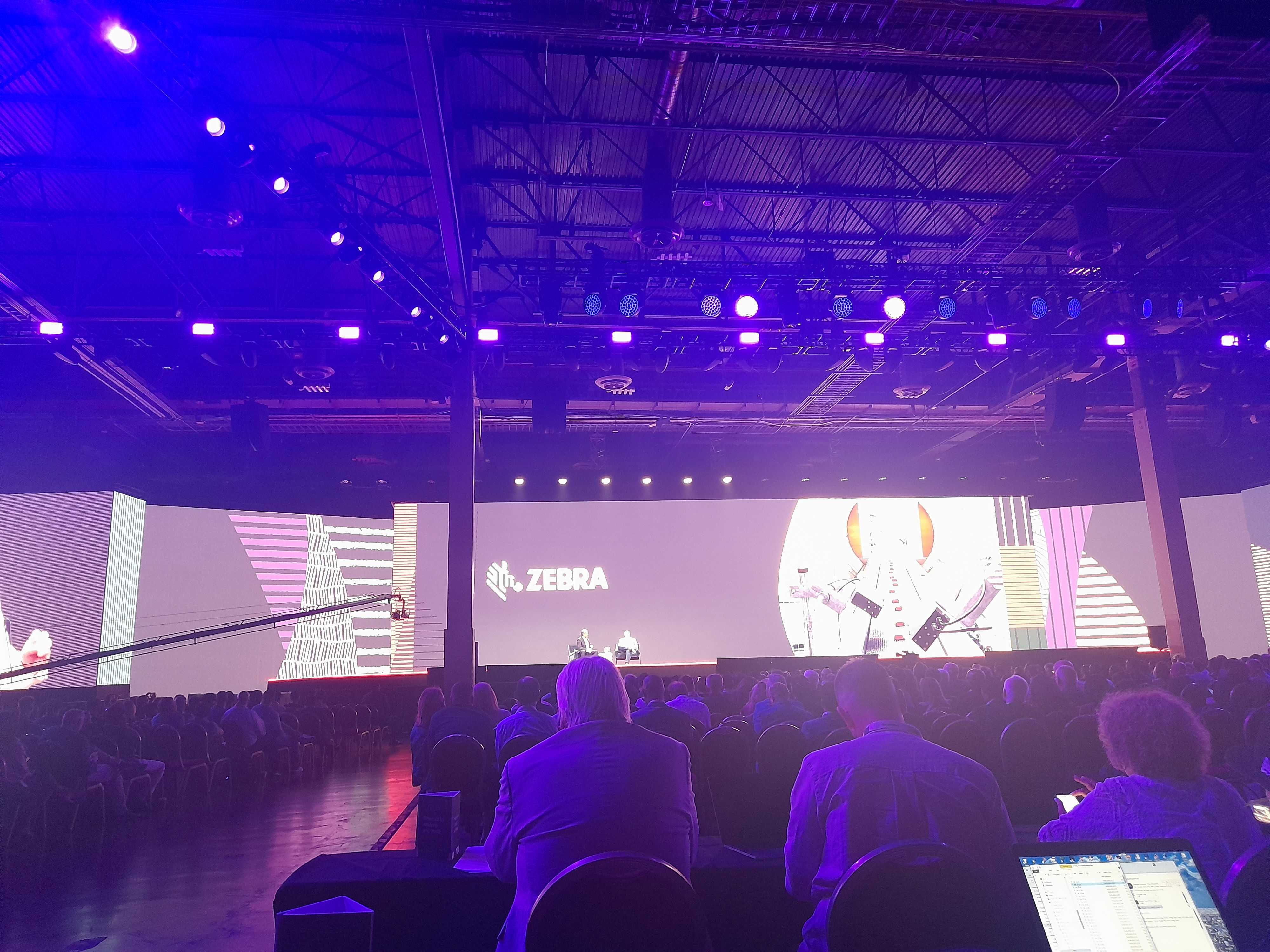
Miranda now moves on to the final demo of this mornings opening talk. He showcases a conversation with one of Oracle’s AI chatbots which has access to user context that can ensure answers are contextualised.
If you’re concerned about the accuracy of responses, fear not - Miranda shows off the fact that all AI responses come with links to sources so that users can check up on how answers were returned.
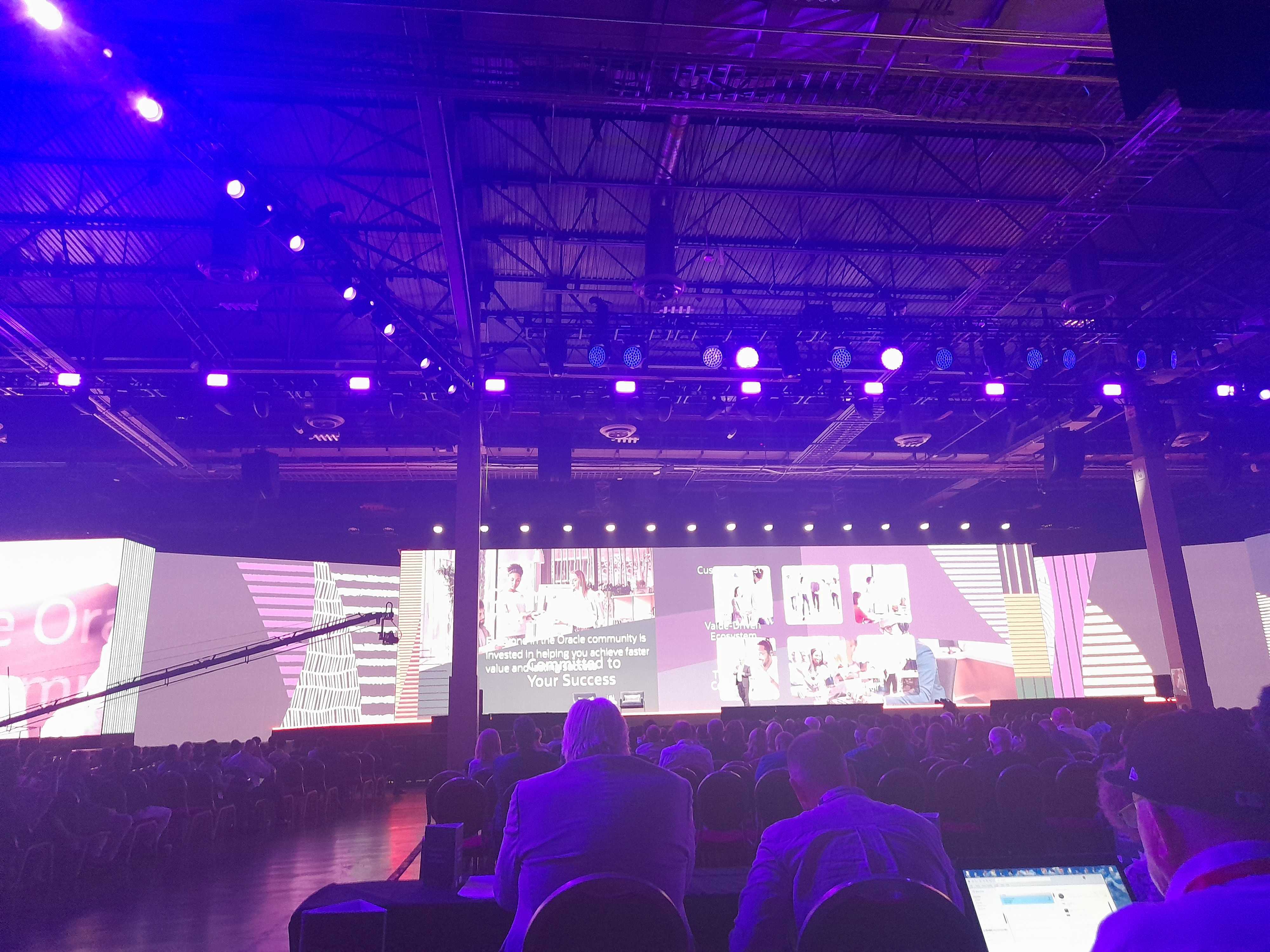
And that brings us to the end of this morning's keynote - tune back in at 11 AM (PDT) today for Oracle CloudWorld’s next talk titled ‘Oracle Cloud: AI, Speed, Flexibility, and Security Your Way.’
We’re back! The keynote hall seems a little quieter for this session but there are still plenty of attendees filing in.
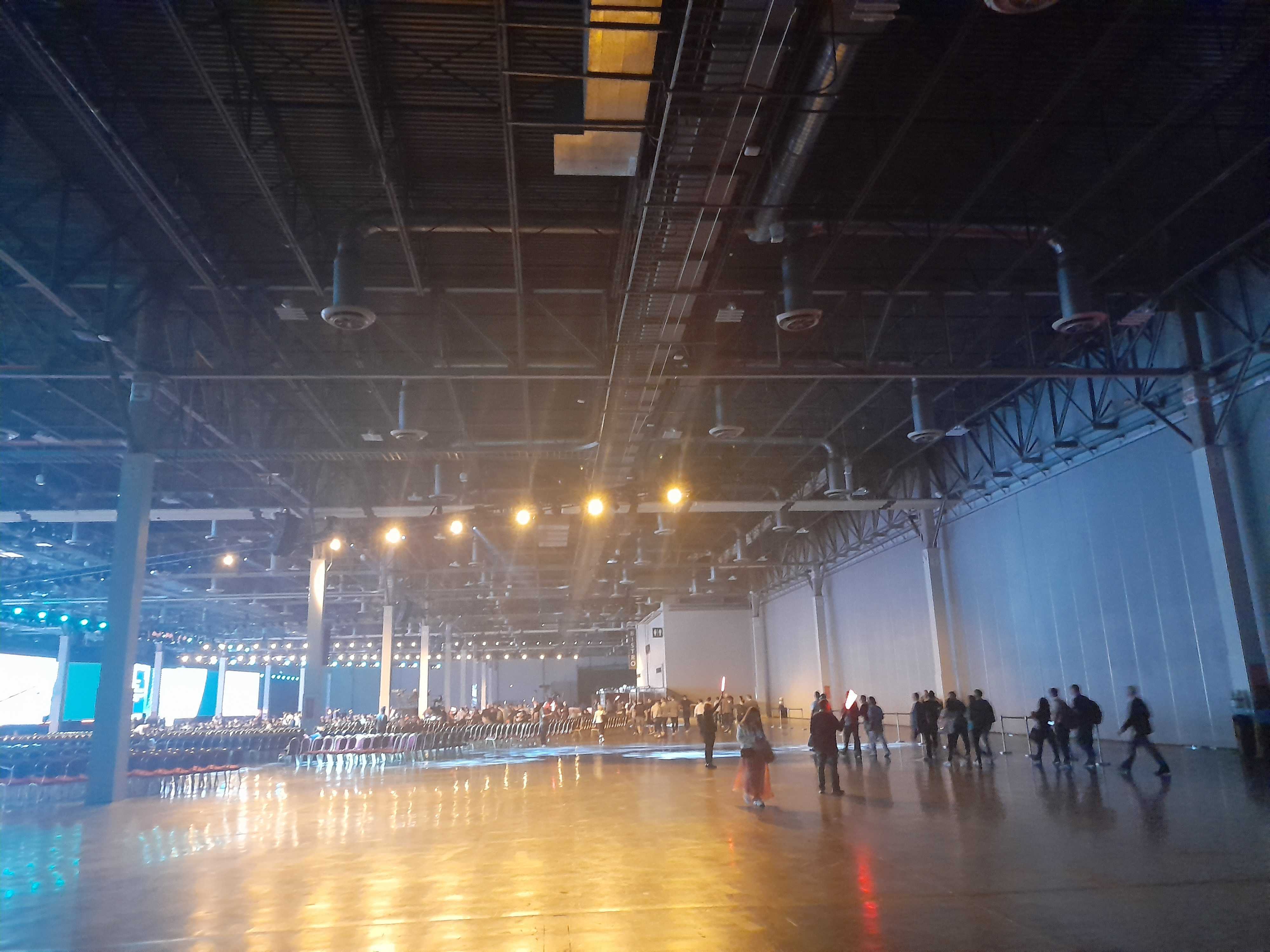
This will be our last session of live coverage from the event, but be sure to keep an eye on ITPro for more pieces focused on CloudWorld. You can also check out our other coverage from this event and the colocated SuiteWorld event:
‘Many of our long-time rivals are now our partners’: Why Oracle is doubling down on multi-cloud
NetSuite expands AI to enhance performance management, analytics offerings
SuiteWorld 2024 live: All the news and updates as they happen
Here comes Clay Magouyrk, EVP of Oracle Cloud Infrastructure Development, following - you guessed it - another introductory video, this time featuring a snappy montage of business leaders (presumably all Oracle customers) commenting on their industry.
After promising to get everyone out in time for lunch, he begins to wax lyrical about shipping containers. He notes how efficiency and cost-effectivenes has been achieved in the shipping container industry over the years.
This had a knock on effect, changing everything from factory layout to road design, he says. The transformation was spread out across industries and different areas.
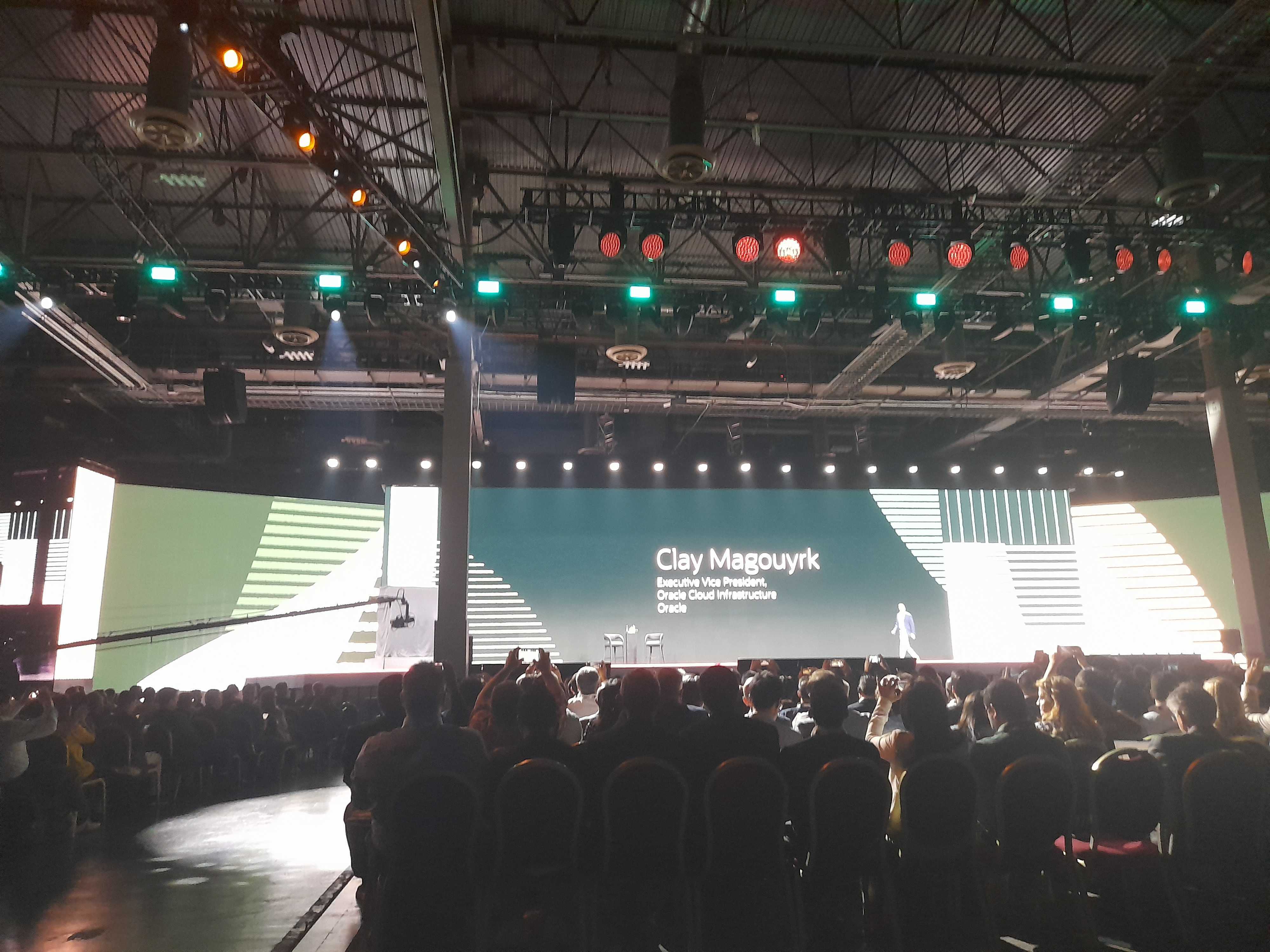
The relevance for Oracle? If you can understand what a “truly transformed” industry looks like, then you can understand what it will mean to truly transform the cloud industry, Magouyrk says.
He adds that Oracle is “continuing to push forward” in this cloud transformation journey. He mentions another industry now, the animation industry, explaining that animators need the cloud everywhere.
With that, it's time for a customer, Skydance Studio. SVP Gregory Brentin takes to the stage to what is certainly the loudest cheers we’ve heard all conference (there seems to be a few Skydance fans in the audience).
“We need to make technology invisible to our artists,” Brentin says - the animators need to have a seamless experience that allows them to create without distractions of digital systems.
Skydance renders some of its projects in OCI, and Brentin even has an example to show off from a new film (which goes down very well with the audience). Brentin says the firm is looking to create a studio positioned entirely within the cloud eventually.
Magouyrk now unveils Dedicated Region25, a physical server product offering that customers can now buy off the shelf to install and create their own cloud regions.
This allows for ease and flexibility, with customers able to position their servers anywhere (rather than having to be side by side) as well as being able to customize their power usage among other things.
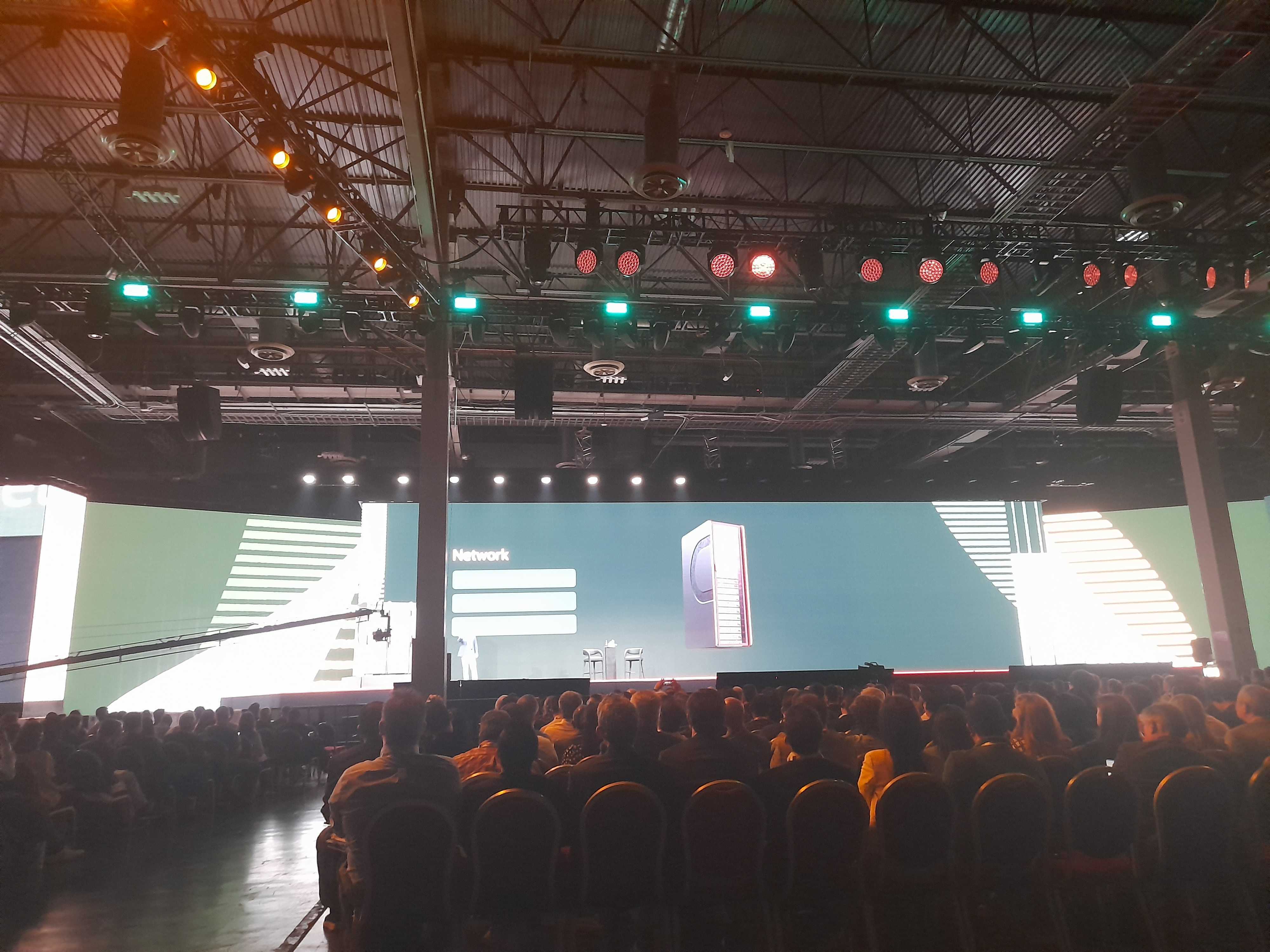
Magouyrk now refers back to multi-cloud, a big theme from yesterday's keynotes and a key aspect of some of the firm’s big announcements - see below for more detail:
‘Many of our long-time rivals are now our partners’: Why Oracle is doubling down on multi-cloud
To explore this topic a bit more, Magouyrk invites Google Cloud’s Amit Zavery to the stage. As you can read about above, Oracle has been building on its partnership with Google Cloud to provide more multi-cloud capability.
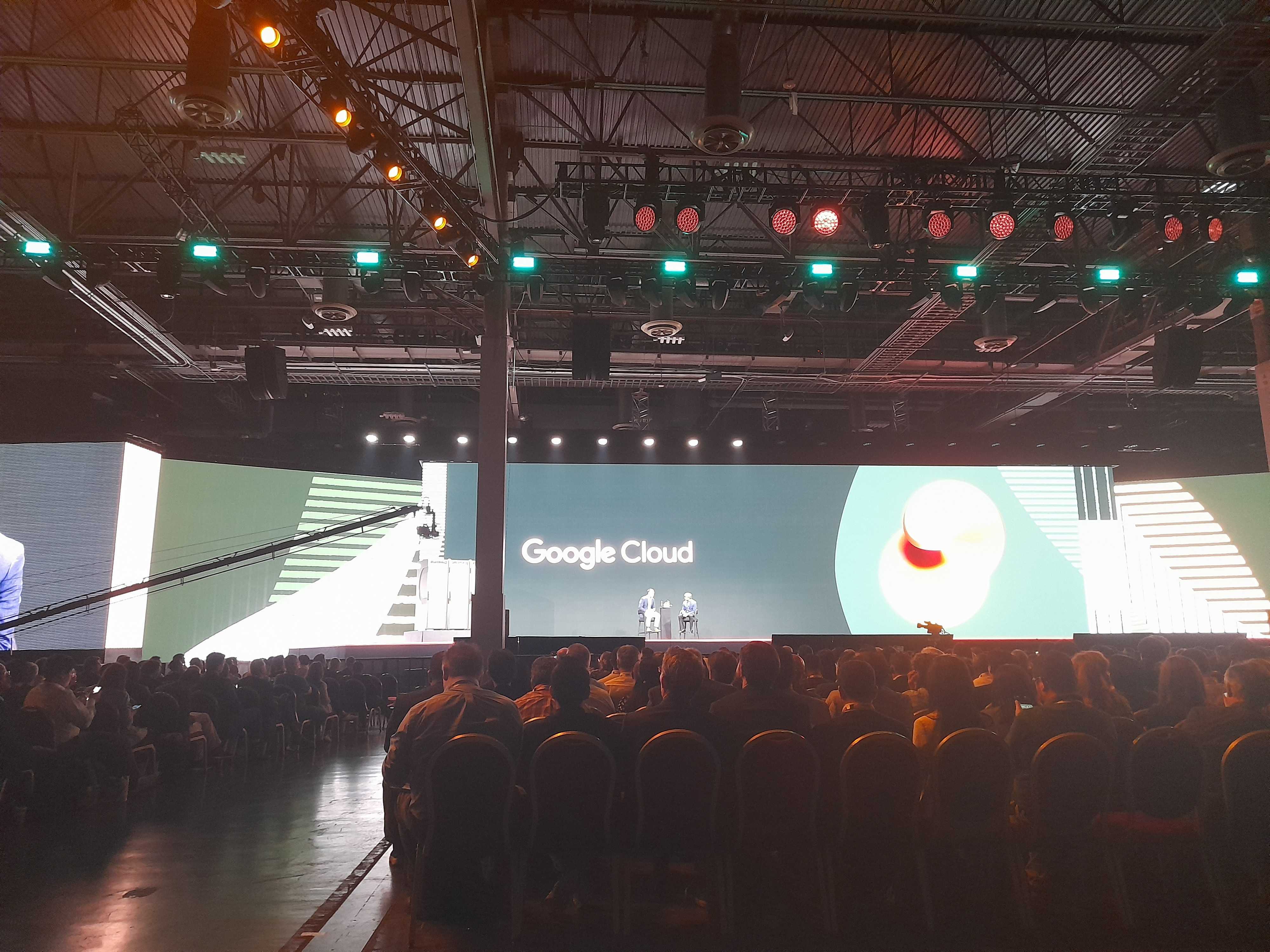
“The partnership so far has been incredible,” Magouyrk says before the pair wrap up their chat about all things Oracle and Google Cloud.
Magouyrk hands the entire stage over to Uber’s Kamran Zargahi now, who opens by talking about the firm’s partnership with OCI and the extent to which Oracle helps Uber deliver its services.
“OCI provides a lot of great features to us,” he says, explaining how Oracle has made the impossible possible for Uber. It’s a short and sweet presentation and Zargahi off the stage fairly quickly.
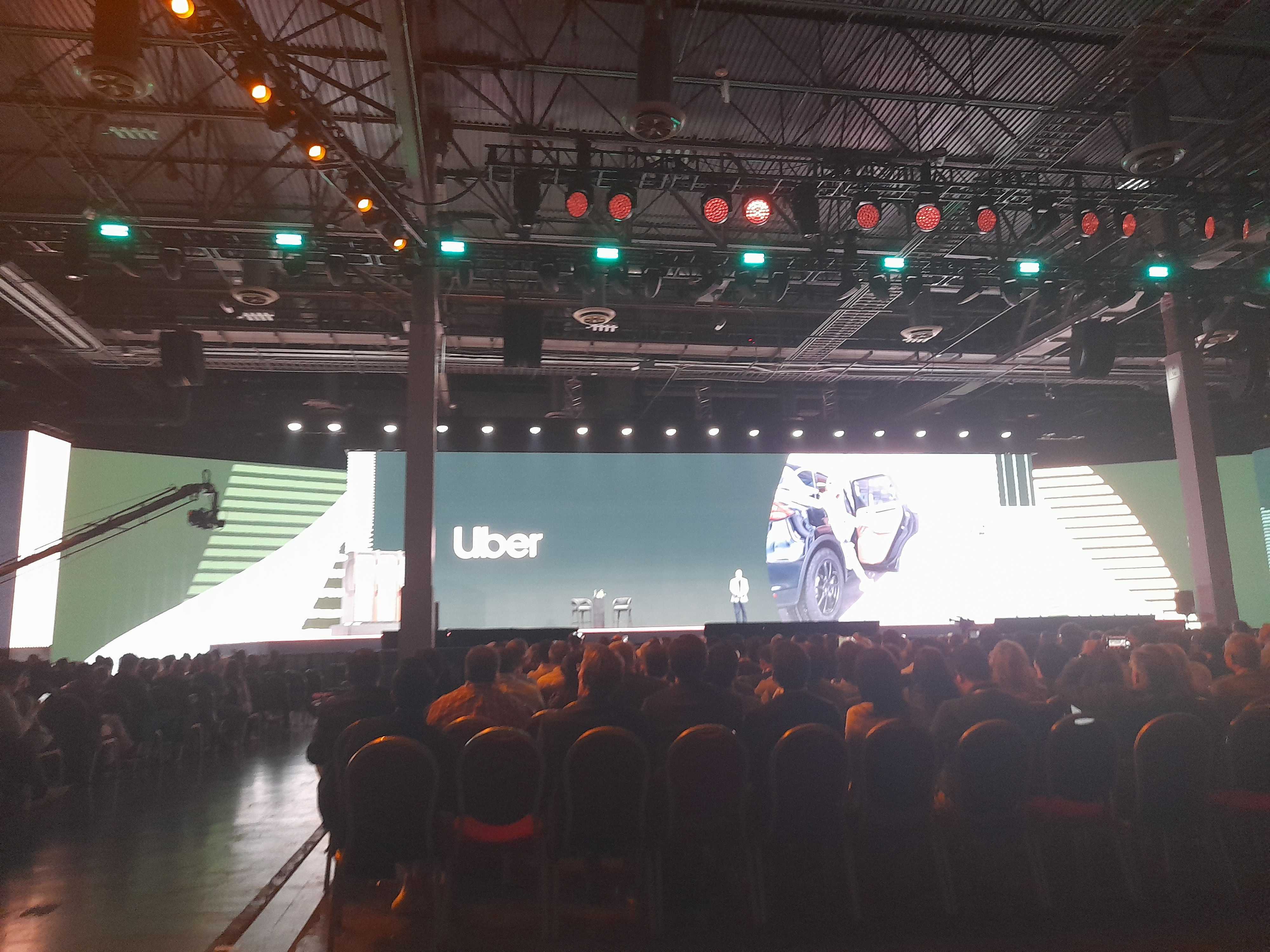
After letting the crowds know that the talk is still on time to get everyone out for lunch, Magouyrk spends a bit of time talking about OCI superclusters and GPU cooling hardware. Magouyrk demos some of the functionality of the AI platform Grok, which runs on OCI and some of these clusters.
After a few closing statements, Magouyrk’s keynote is over - and so is ITPro’s live coverage of Oracle CloudWorld 2024. There’s still plenty to talk about though, so keep an eye out for more coverage over the next few days.
